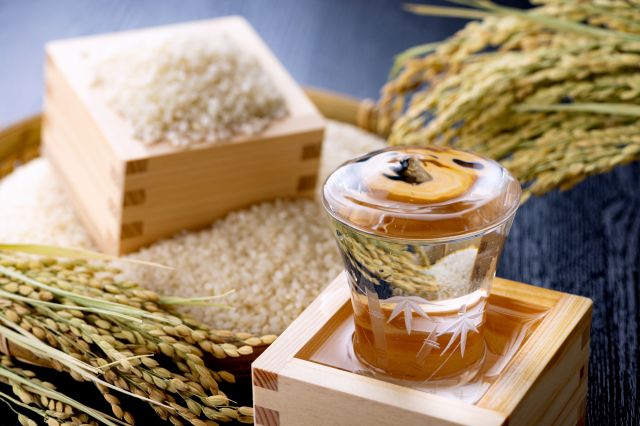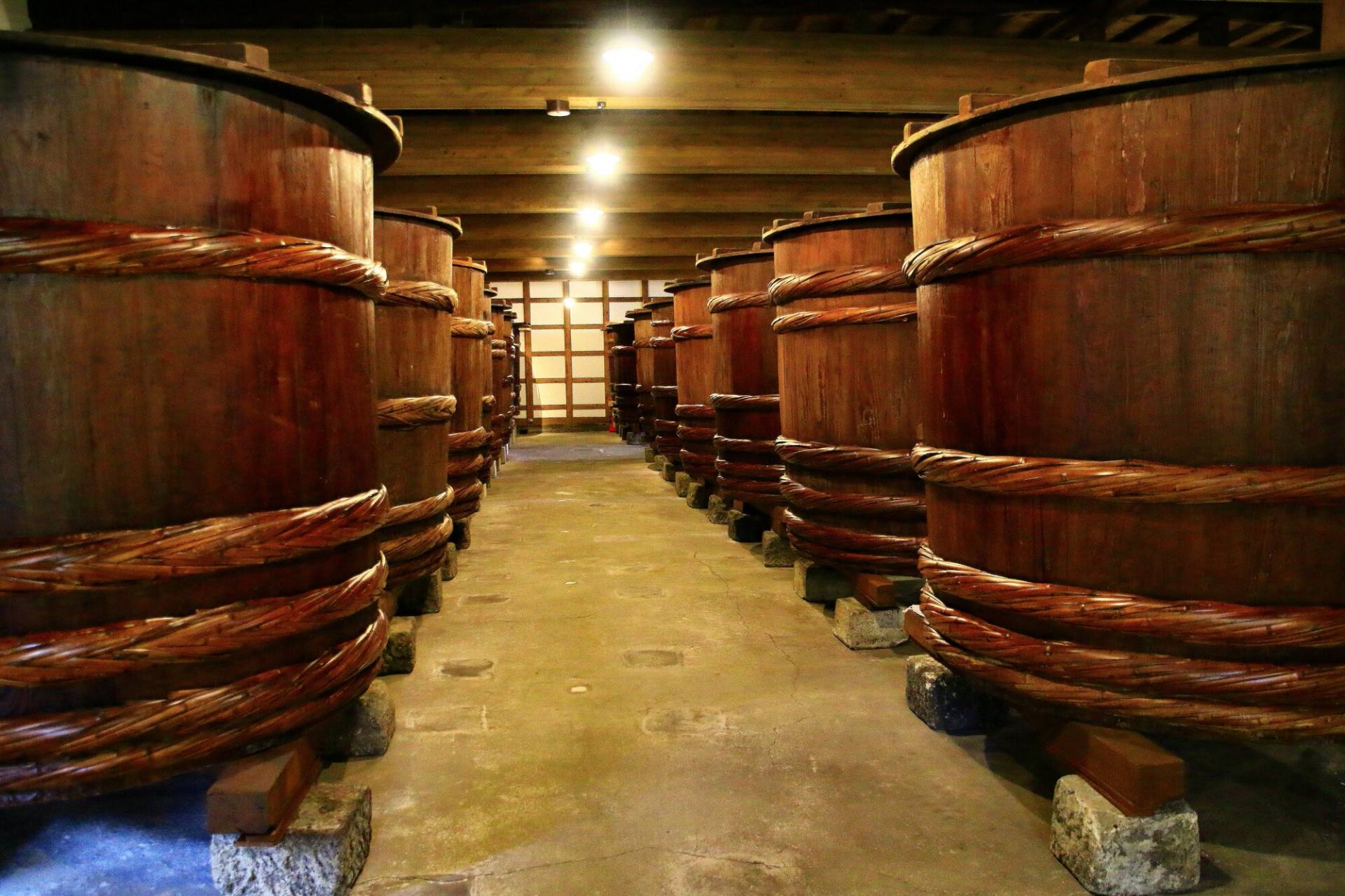
10 Select Sake Breweries in Kansai, a Taste Stemmed in Local Climate and Culture.
13 Feb 2024
The Kansai region is a hub for sake production and regarded by the locals as the birthplace of sake. Near and far the many sake breweries are lauded for their eclectic sakes, each with unique flavor profiles and features to taste.
No two sake are alike, as a single sake’s flavor can change depending on which rice, water or yeast was used, or even by the brewing techniques chosen by the toji (master brewer) and brewery workers.
The climate and culture of each region also play a key role in sake making, tying each batch to the story of the land itself.
Japan’s unique heritage of sake brewing is now under the spotlight since its registration in December 2021 as a national intangible cultural property, along with a proposal for its inscription on the UNESCO Intangible Cultural Heritage list made in March 2022.
Join the many and find out why by visiting the local breweries where sake is made. Many of these spots have opened their doors, offering visitors full backstage access to the best of shopping at direct, in-house shops and brewery tours.
Table of Contents
- Fukui Prefecture: The Tale of Japanese Sake Culture from the Foot of Eiheiji to Japan and the World: Kokuryu Sake Brewing
- Shiga Prefecture: The age-old classic “Shichihonyari” brand sake from Tomita Shuzo, a historic brewery of legend since 480 years ago.
- Kyoto Prefecture: Takeno Sake Brewery in Kyoto's Tango region, where the Takeno brothers have infused pure creative flare into the sake industry while upholding the legacy of an age-old brewery.
- Osaka Prefecture: Akishika Sake Brewery a famed brewery in Osaka known for its integrated production from rice to sake.
- Nara Prefecture: Nara Toyosawa Sake Brewery is a place for handcrafted sake production set in Nara, a cultural bed for the history of sake.
- Wakayama Prefecture: From the rice heartland of Wakayama, the innovative brewery Heiwa Shuzo delivers the "Climate of Kishu"
- Mie Prefecture: World-renowned fine sake "Hanzo" crafted by a young Toji at Ota Sake Brewery
- Hyogo Prefecture: A rare female Toji brews sake at the brewery closest to Himeji Castle, Nadagiku Sake Brewery.
- Tottori Prefecture: At the foot of the sacred Mt. Daisen, Otani Sake Brewery engages in rice cultivation for sake and brews the dry signature sake "Takaisami”.
- Tokushima Prefecture: Brewed with the underground water of the Yoshino River, a sake that brings out the flavor of rice, "Hosui Sake Brewery”.
- Wrap-up
[Fukui Prefecture] The Tale of Japanese Sake Culture from the Foot of Eiheiji to Japan and the World: Kokuryu Sake Brewing
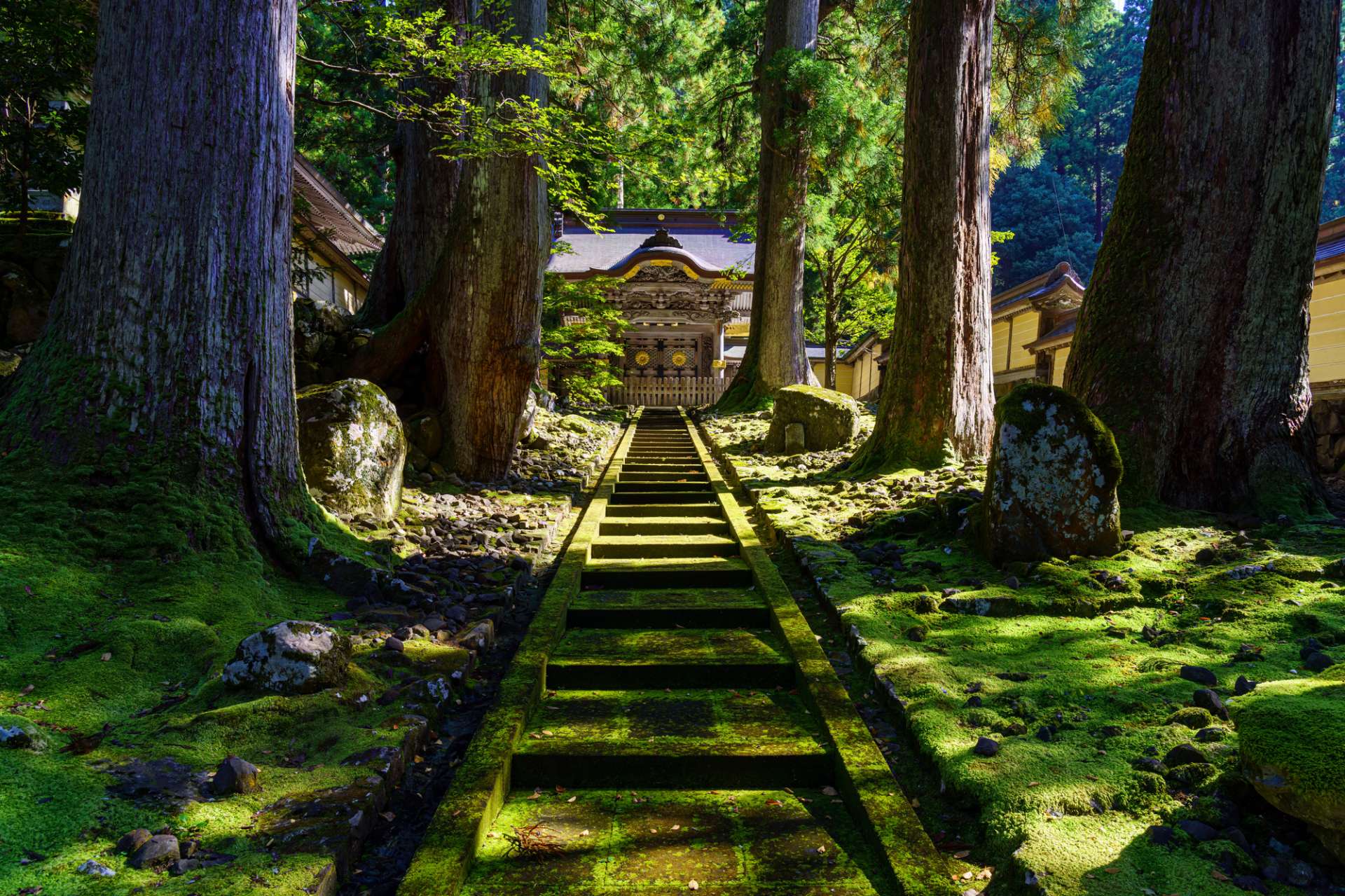
Fukui Prefecture's Reihoku area is known for long-loved destinations like the Soto Zen temple Eiheiji, Tojinbo cliffs designated as a natural monument of Japan, and the Fukui Prefectural Dinosaur Museum, one of the world's three major dinosaur museums. The region sits along the Japan Sea coastal climate zone, characterized by low winter sunlight and high precipitation.
The region is fringed by cold, dry seasonal winds on land that mix with the updrafts of warm, moist air from over the Japan Sea, leading to a high trend for snow clouds and colder, snowier days in spots around Reihoku.
The Reihoku area local trade is Gohyakumangoku rice, a specific variety made in abundance here that’s perfectly suited for a robust sake brewing tradition thanks to the high-quality water sources found nearby.
A number of boutique, small-scale sake breweries call Reihoku home, including Kokuryu Sake Brewing, and brand located near Eiheiji that’s kept up with a history of sake making over 220 years since its founding in the middle to late Edo period (1804).
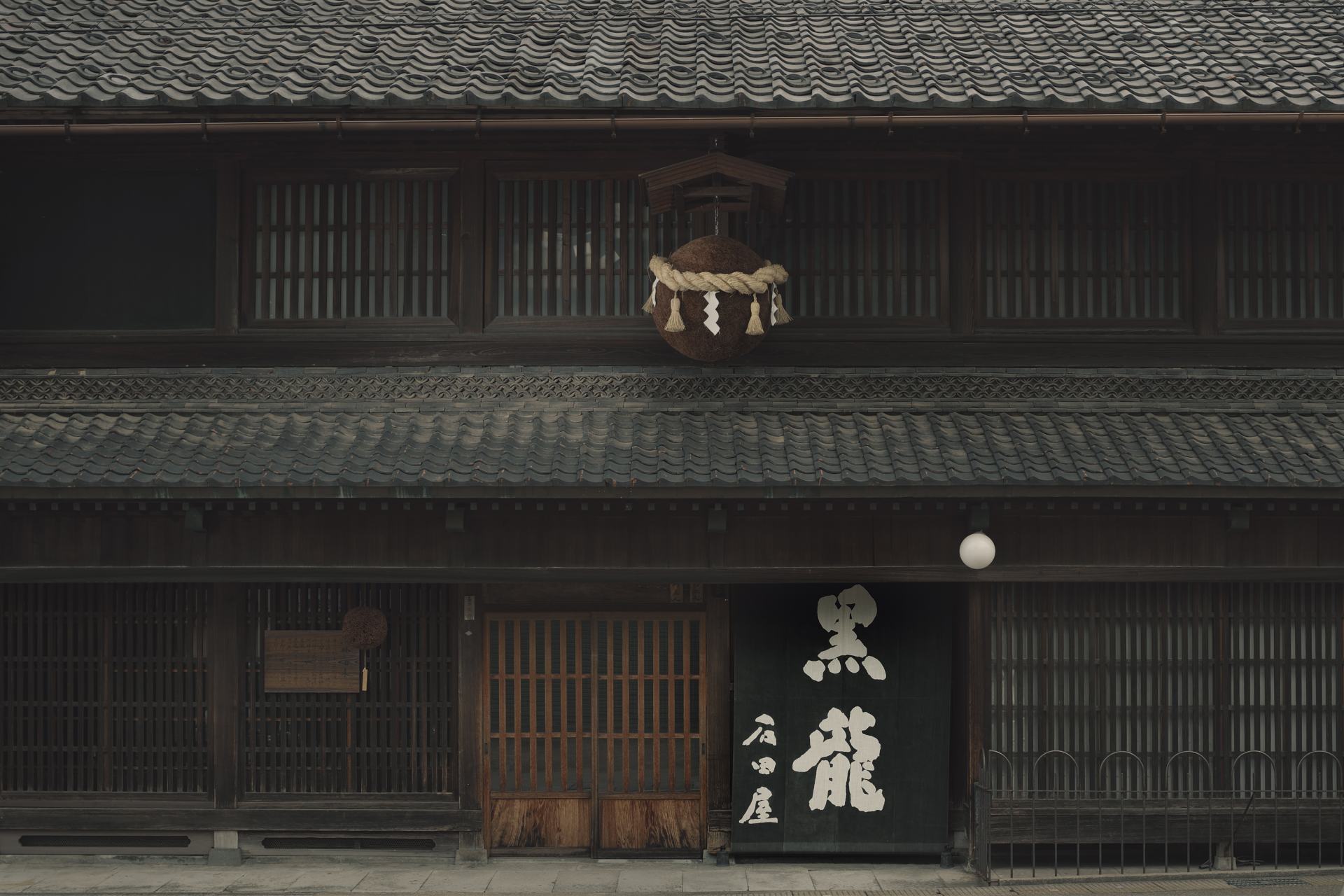
A traditional brewery located near Eiheiji, evolving with time while preserving its heritage tradition.
Step inside to find the flagship “Kokuryu” brand, a gingo-style sake with smooth, rich notes and a moniker that points to the old-world name of the nearby Kuzuryu River.
The concept behind it points to a “sip that connects to eternity”. The brewery is known for leading in innovative strides as it evolves over time, pioneering the trend of chilled sake drinking as well as for commercializing daiginjo sake nationwide.
Today, "Kokuryu" is regarded as a must-try sake among enthusiasts, widely recognized in Japan and around the world.
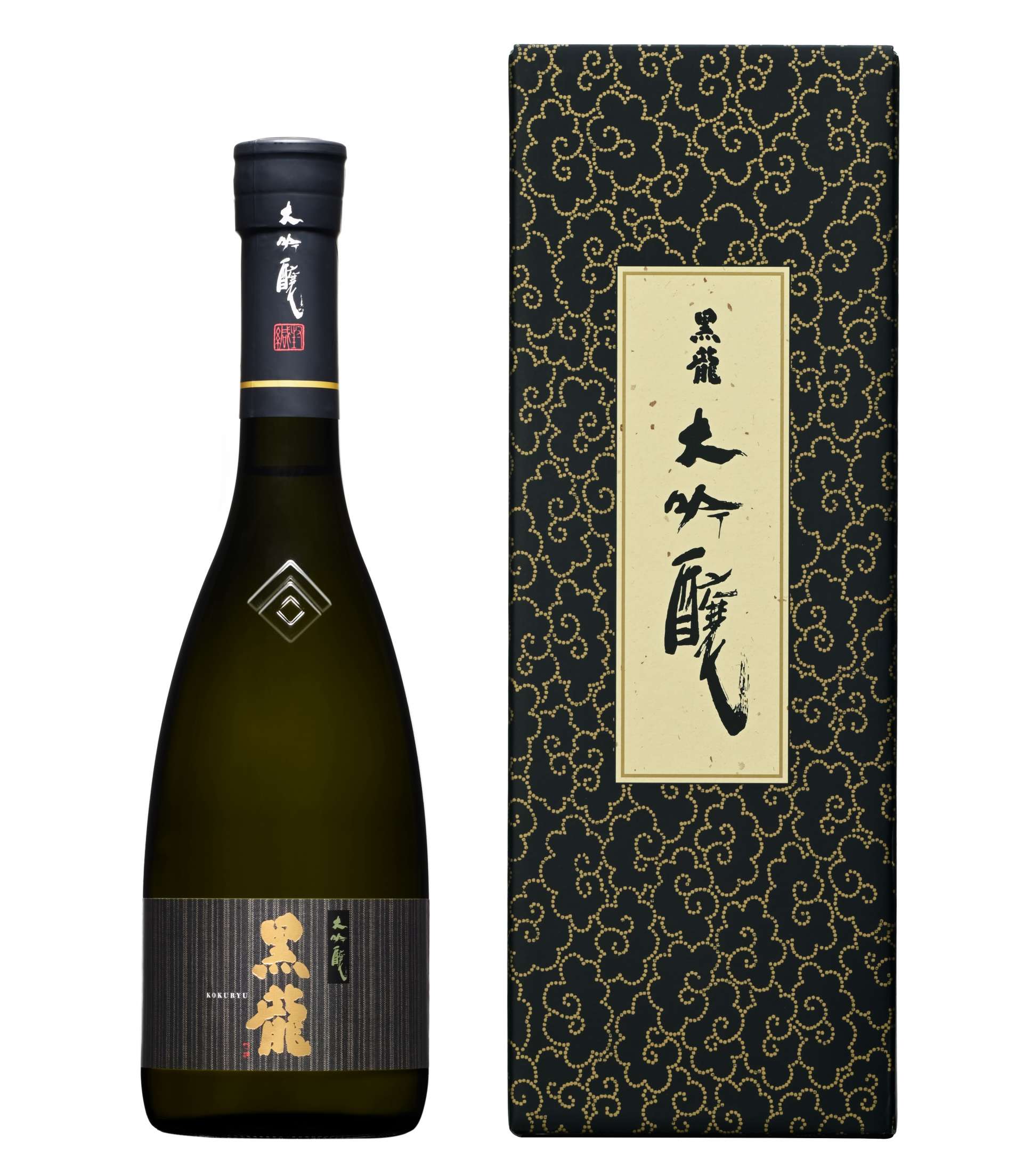
The quintessential "Kokuryu Daiginjo" is characterized by its supple taste and fine finish.
Kokuryu Sake Brewing does not offer brewery tours, but at the adjacent retail store Ishidaya Honten visitors are welcome to browse and shop the brewery's seasonal sake.
Just a hop and skip away in the same area of Eiheiji town a brand-new offering entered the scene in June 2022 called ESHIKOTO, a luxe hub and destination opened by parent company Ishidaya Niemon Co., Ltd
The Shuraku gallery building on site is home to boutique sake shop Ishidaya ESHIKOTO Store and the restaurant Apéro & Pâtisserie acoya, two names spreading the irresistible taste of Fukui’s esteemed gastronomy.
Here’s a place to take in the landscape of the Kuzuryu River and the surroundings of Eiheiji while diving deep into the world of Kokuryu.
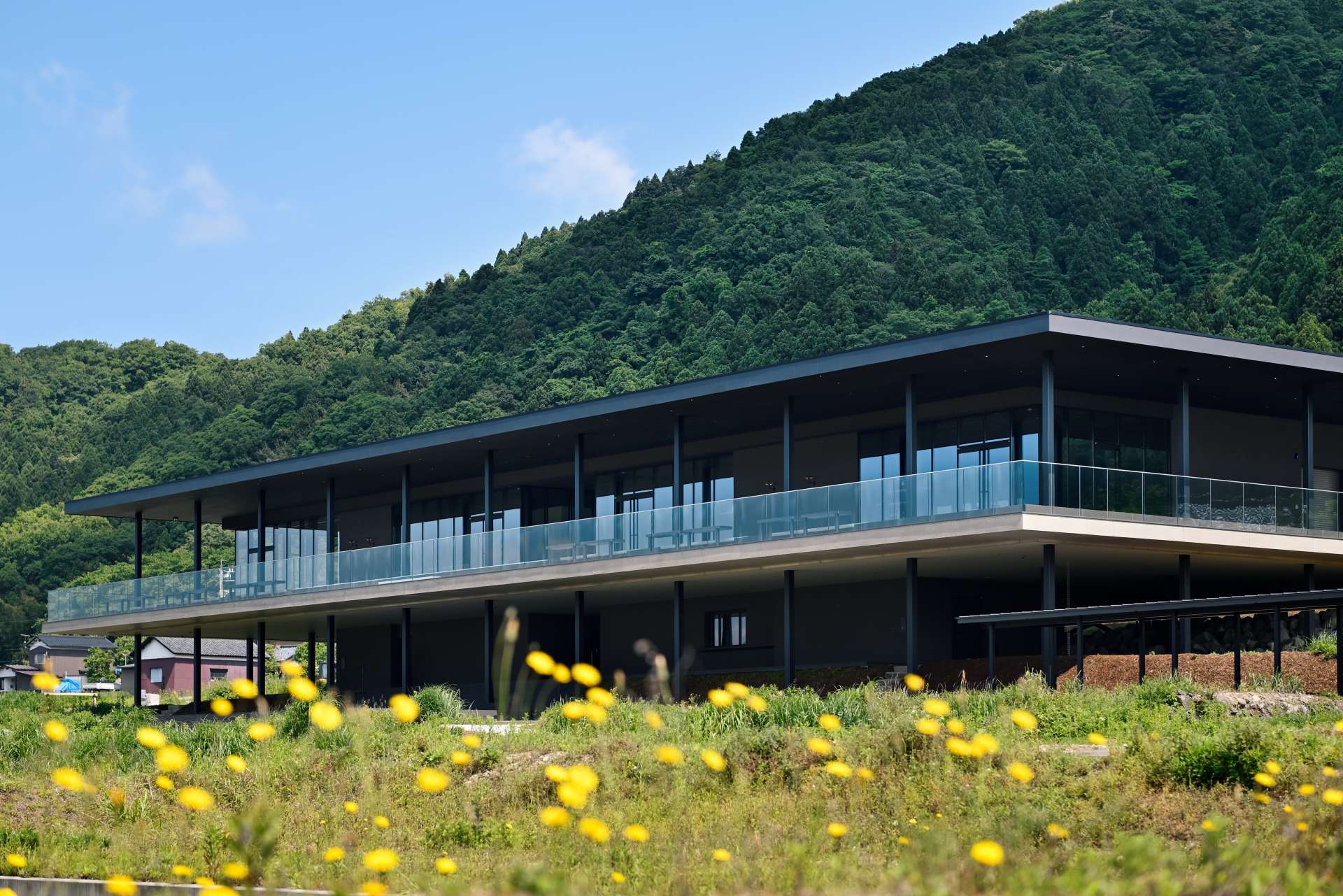
Sake shop and restaurant at ESHIKOTO Shuraku.
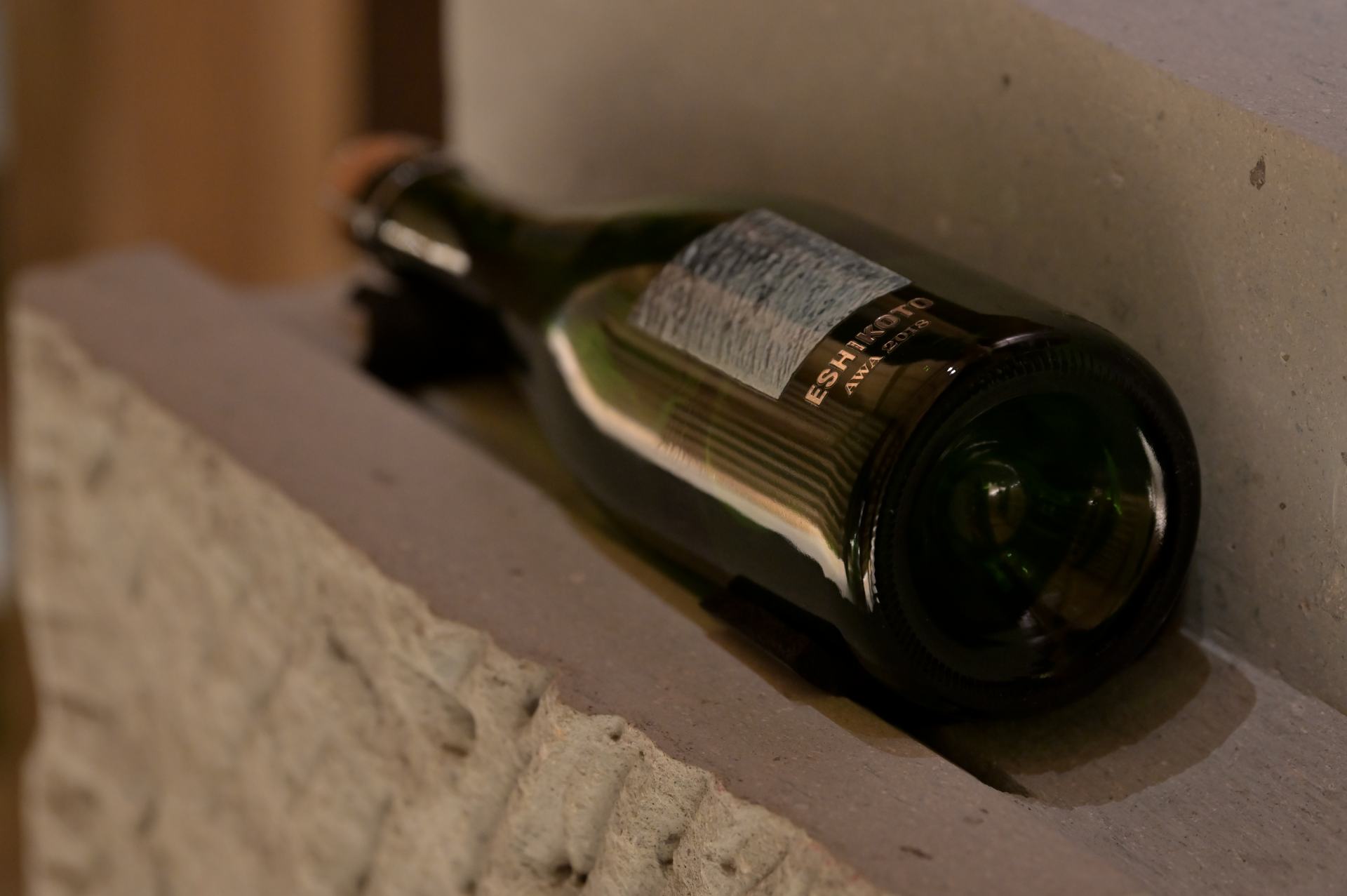
Sparkling ESHIKOTO AWA sake and all the latest from the ESHIKOTO brand.
Details
- Name in Japanese
-
石田屋 本店
Ishidaya Honten - Postal Code
- 910-1133
- Address
- 1-38 Kasuga, Matsuoka, Eiheiji Town, Yoshida County, Fukui
- Telephone
- 0776-61-3733
- Business Hours
- 10:00am - 4:30pm
- Closed
- Sundays (and other temporary closures)
- Access
- About 7 minutes walk from Matsuoka station on the Echizen Railway Katsuyama Eiheiji Line
- Name in Japanese
-
石田屋 ESHIKOTO店
Ishidaya ESHIKOTO Store - Postal Code
- 910-1202
- Address
- 12-17 Shimohoujouji, Eiheiji Town, Yoshida County, Fukui
- Telephone
- 0776-63-1030
- Business Hours
- 10:00am - 5:00pm
- Closed
- Wednesdays, 1st, 3rd, and 5th Tuesdays (and other temporary closures)
- Foreign language website
- Official Website
- Access
- About 10 minutes by car from Eiheiji-guchi station on the Echizen Railway Katsuyama Eiheiji Line
[Shiga Prefecture] The age-old classic “Shichihonyari” brand sake from Tomita Shuzo, a historic brewery of legend since 480 years ago.
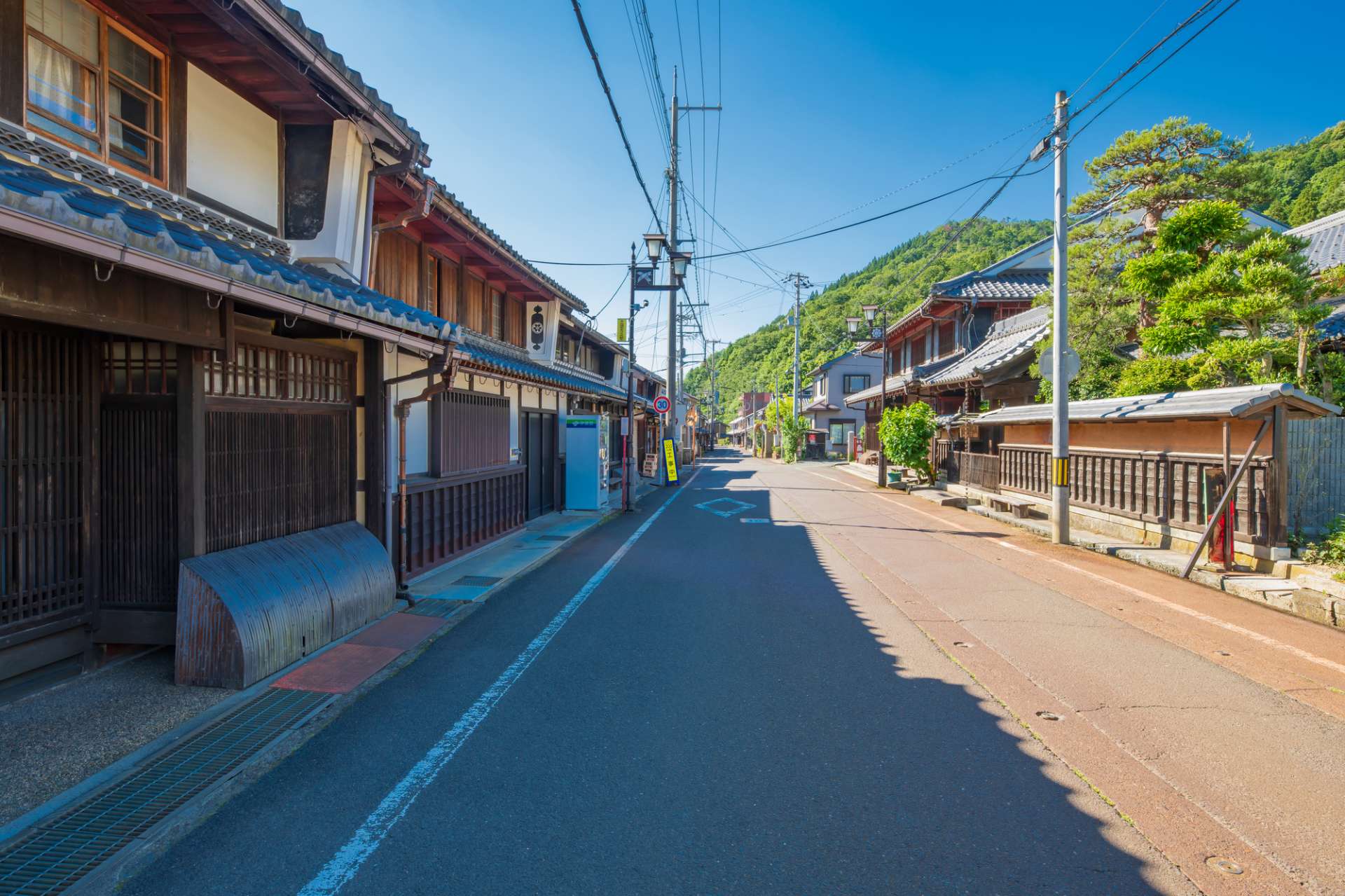
Shiga Prefecture is nicknamed by the locals as “lake country” as it’s home to Lake Biwa, the largest lake in Japan that makes up for a full sixth of the geographic region.
The lakeside views offer unmatched beauty that have long captivated people in search of the famed Omi Hakkei and Biwa Lake Hakkei views.
No trip here is complete without a stop at destinations near the lake like Hikone Castle with a national treasure castle tower, Omi Hachiman as the hometown of Omi merchants, and Mt. Hiei (Hieizan) Enryakuji Temple, the head temple of the Tendai sect.
For foodies, there’s a heaping plate of delights to try including local bites like funazushi prepared with lake fish and so much more.
At the prefecture’s center sits the Omi Basin, one of the leading rice-producing areas in Kansai, with about 90% of its arable land used for rice cultivation. Not only is it a major producer of sake rice used by sake breweries nationwide, but it also boasts abundant subterranean water flowing from mountain ranges such as the Suzuka, Ibuki, Nosaka, and Hira, contributing to its reputation as a top sake-producing region.
Tomita Shuzo is one such brewer known for its rank among the ancients in Japanese sake brewing history. This particular spot is found in Kinomotojuku, a thriving post town along the northeastern Hokkoku Kaido skirting Lake Biwa. Its founding dates back to the Tenbun era during the Muromachi period, boasting a long history over 480 years through 15 generations.
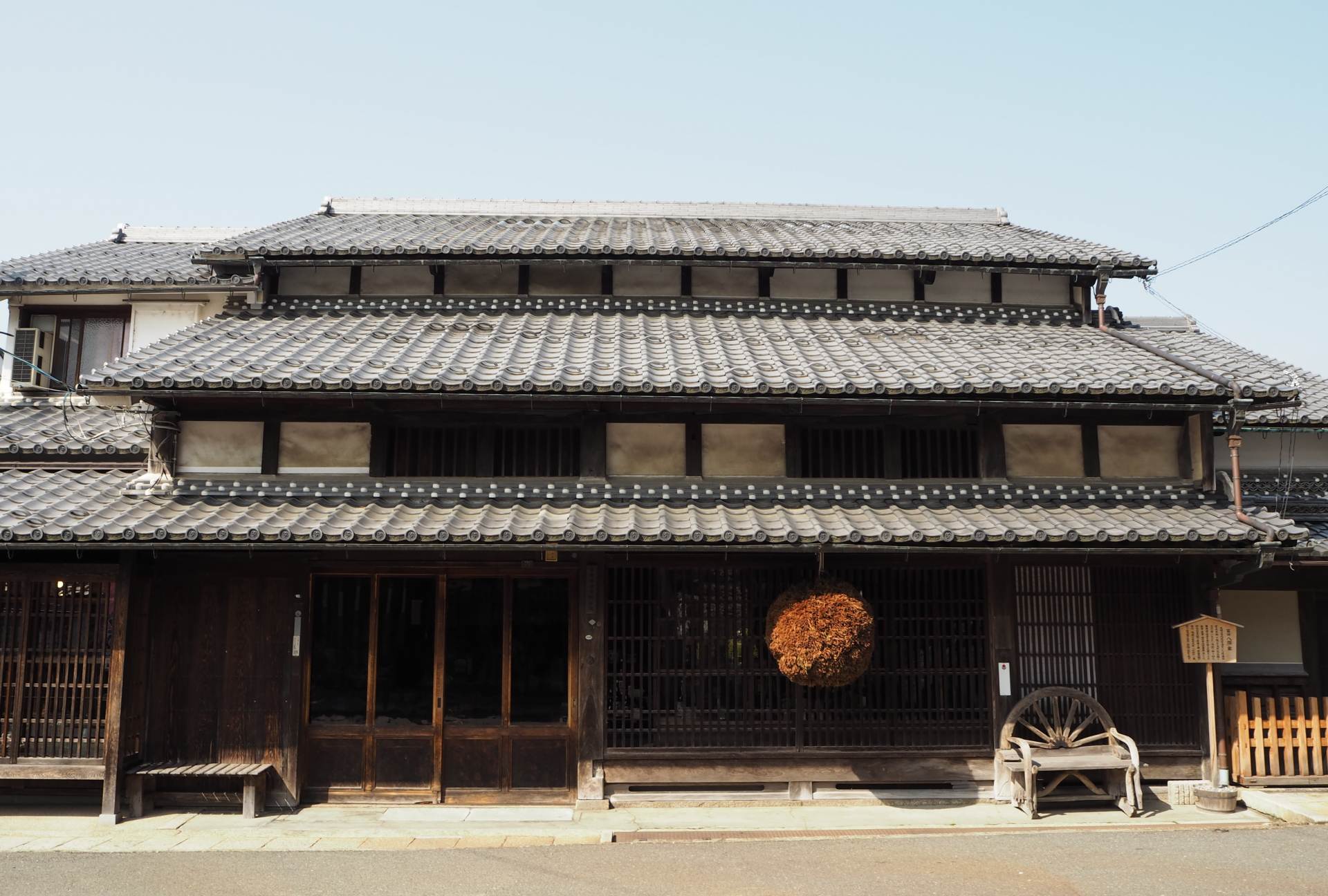
The brewery’s main building was built in the Edo period and remains today as a registered tangible cultural property in Japan.
The Shichihonyari sake is named after the seven young warriors who excelled in the Battle of Shizugatake after the Honnoji Incident, fighting for Oda Nobunaga's succession.
Its smooth aroma, robust flavor, and lingering taste characterize it as a "victorious sake" and "auspicious sake," garnering many fans nationwide.
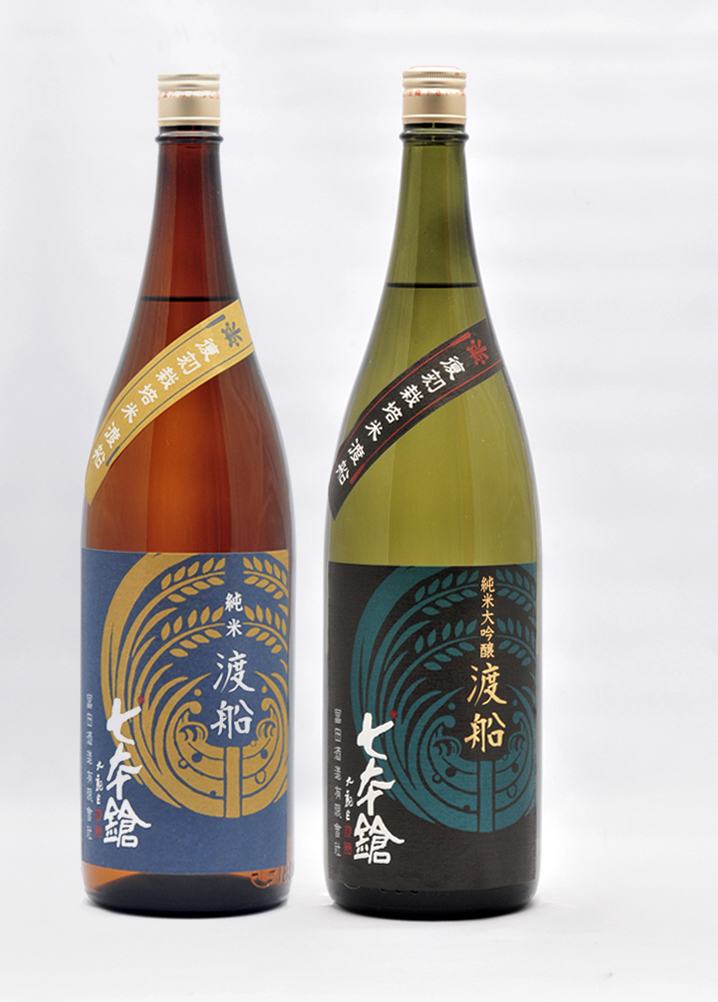
There is also a series brewed with the once-extinct, now-revived legendary sake rice "Watari Bune".
The fifteenth-generation brewery owner, Yasunobu Tomita, has focused on sake brewing that brings out the "local" aspect of local sake, drawing from his experiences visiting wineries and distilleries across Europe and America that showed an undeniable commitment to local product and community.
The emphasis here is brewing only with local water, rice from the immediate surroundings, using as much as 70% of the sake rice used from local contracted farmers.
To top it all off, Tomita even keeps an exclusive line of goods to share even more sake delights, with a proud lineup of bath salts, soaps made from sake lees, T-shirts, hand towels, and sake cups.
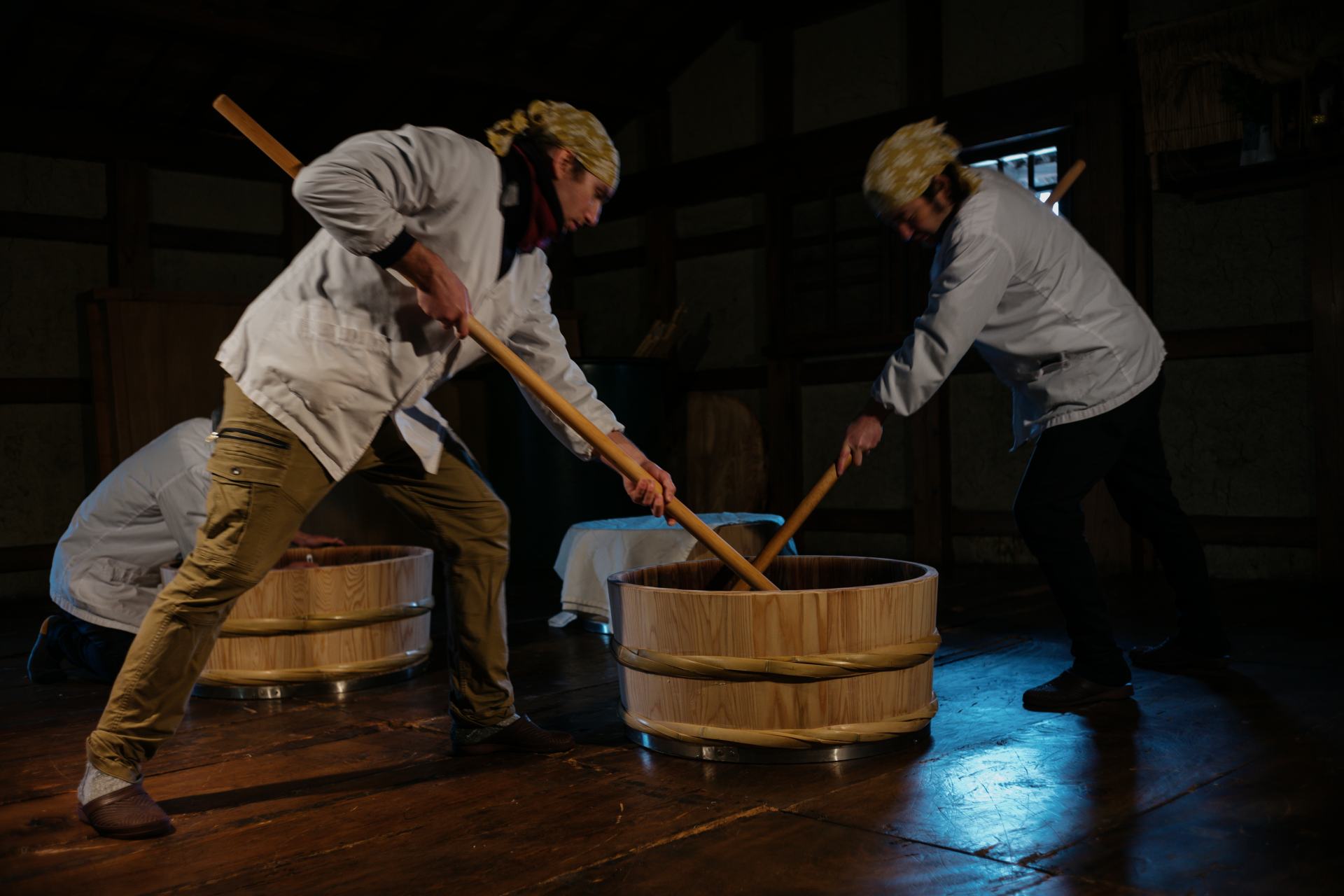
Tomita Brewery's sake is brewed by hand in micro batches.
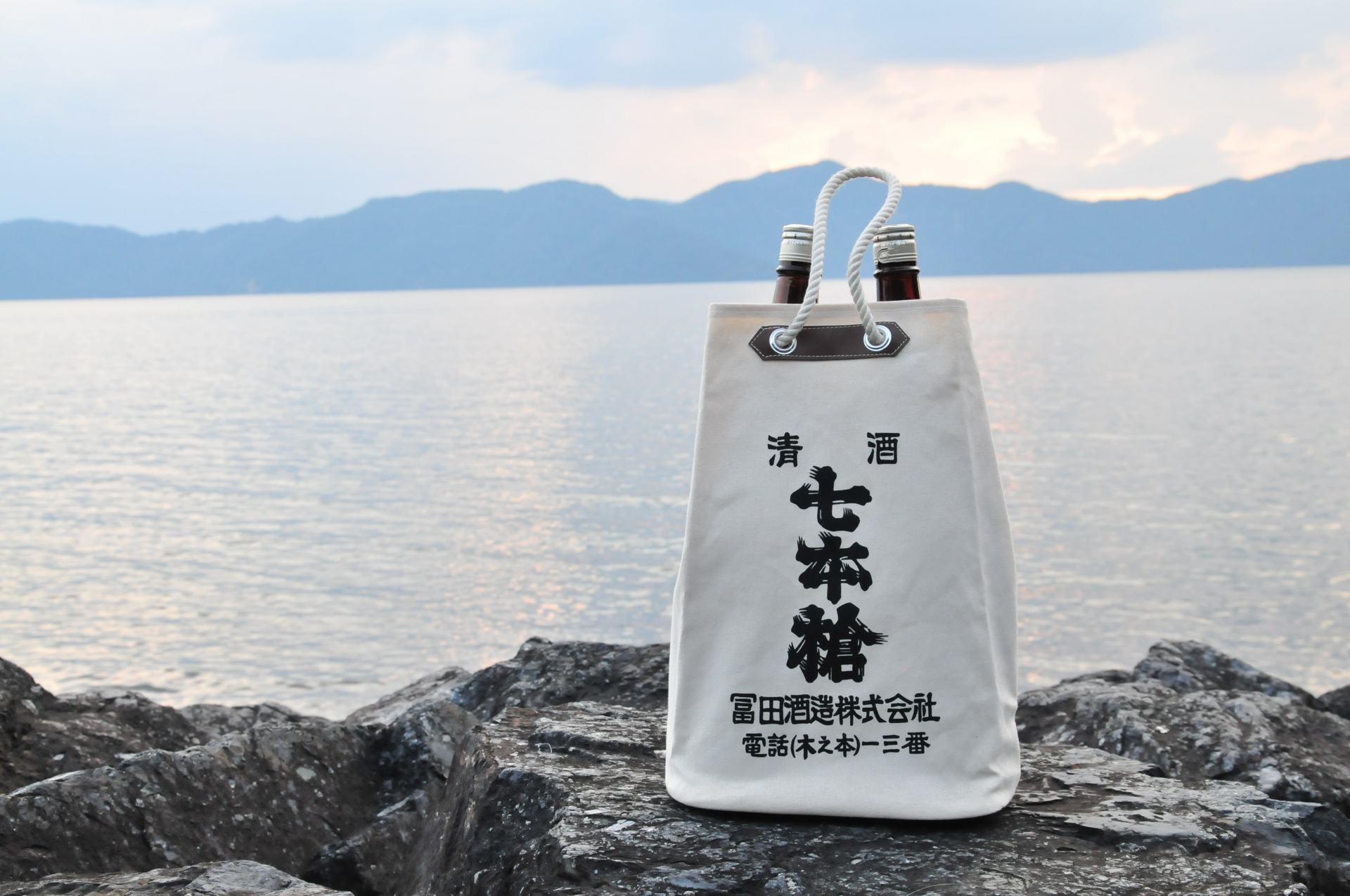
The ever-expanding range of goods shine a light on the delights of local sake.
The original brewery was built during the Edo period but still keeps up with sake in an effort to treasure loved traditions.
Here you’ll find a theme of passing down authentic sake, but an equal goal of preserving the surrounding environment as much as possible.
Although the brewery is not open for tours, visitors are encouraged to experience the brewer's passion and vision with a tasteof signature sake, Shichihonyari.
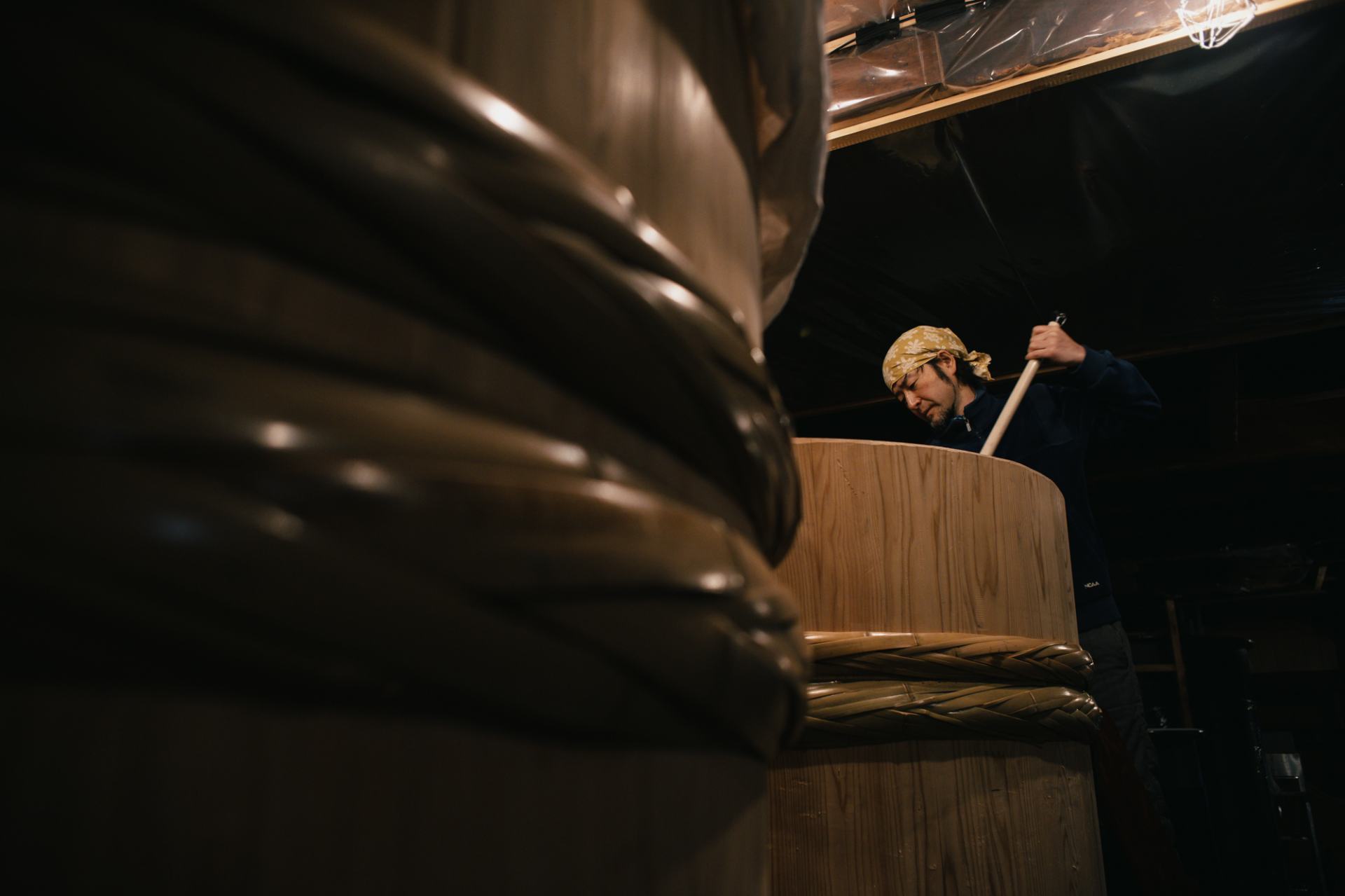
Reexploring the use of wooden barrels, a classic tradition to share into the next generation.
Details
- Name in Japanese
-
冨田酒造有限会社
Tomita Shuzo Co., Ltd. - Postal Code
- 529-0425
- Address
- 1107 Kinomoto, Kinomoto Town, Nagahama City, Shiga
- Telephone
- 0749-82-2013
- Business Hours
- 9:00am - 5:00pm
- Closed
- Irregular
- Foreign language website
- Official Website
- Access
- About 5 minutes walk from Kinomoto station on the JR Hokuriku Main Line
[Kyoto Prefecture] Takeno Sake Brewery in Kyoto's Tango region, where the Takeno brothers have infused pure creative flare into the sake industry while upholding the legacy of an age-old brewery.
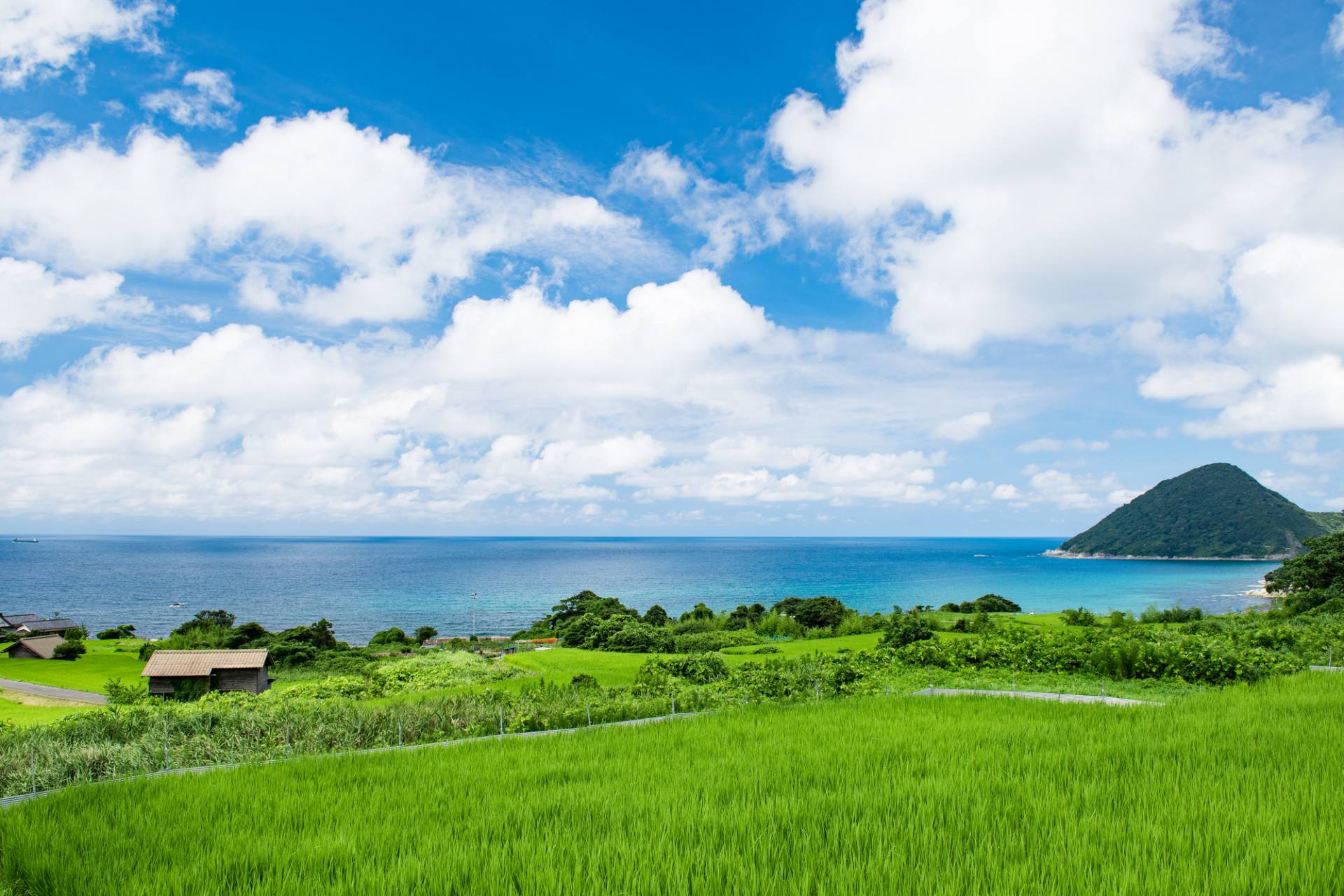
The northern region of Kyoto Prefecture faces the Sea of Japan and has developed along the ages as a gateway and port of exchange with greater lands, often referred to as “second Kyoto” or “Kyoto by the sea”. At the northernmost tip of this region you’ll find Kyotango City, a destination kissed with nature and coarse coastlines recognized as a UNESCO Global Geopark.
It's also a treasure trove of ingredients, with a wide crop of seasonal vegetables, fruits and seafood fresh caught from the Sea of Japan.
Step inside the city to find the inner town named Mineyama, home to Tsuki no Wa Da, the birthplace of rice cultivation, that earned this spot its trade and place on the map.
The combination of clean water and the significant temperature difference between day and night has long supported active sake brewing in Kyotango.
It’s also the homeland of the Tango Toji, a man of high regard and skill said to have made a name for himself in places like Fushimi. Today, there are five sake breweries in the city that continue to uphold the local sake heritage of Kyotango with a personal flair all their own.
One of these is famed breweries is Takeno Sake Brewery, located at the near center of Kyotango City.
With over 170 years under its belt, this historic spot traces its founding roots as far back as the fourth year of the Koka era (1847) during the late Edo period, which was reestablished after a hiatus during wartime.
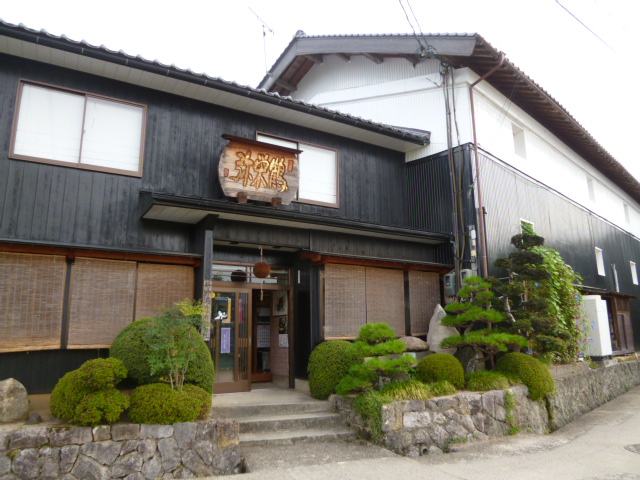
The sake brewery set against a tranquil country backdrop.
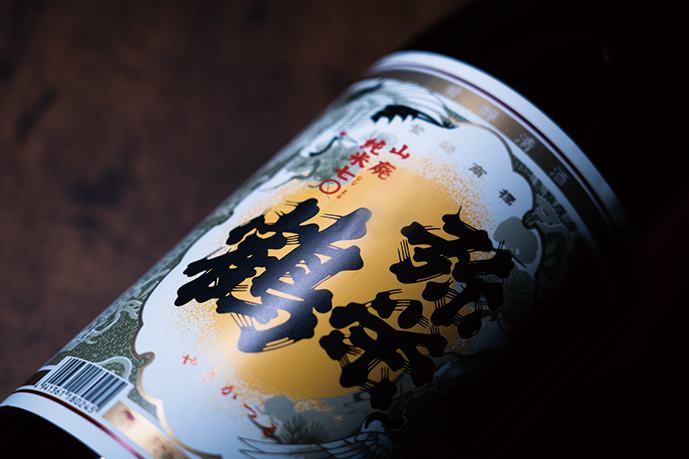
Yasakatsuru, the iconic brand passed down for generations at the brewery.
The brand is a burbling hub of innovative takes on preserved, classic traditions, currently run together by the father and owner Yoshihiro Yukimachi alongside the Yukimachi brothers—Yoshiki, the sixth-generation Toji (master brewer), Tatsuro and Kohei.
Their pursuit is brewing that brings out the utmost of the rice to achieve the freshest quality sake. They also keep close, local ties with contracted farmers to produce pure rice sake for each variety of rice under the “Kurabu” series.
Here the eye is on making sake that’s enjoyed with the same sensibilities of wine, paired with a wide range of dishes from Japan and the world to better realize even more possibilities of sake.
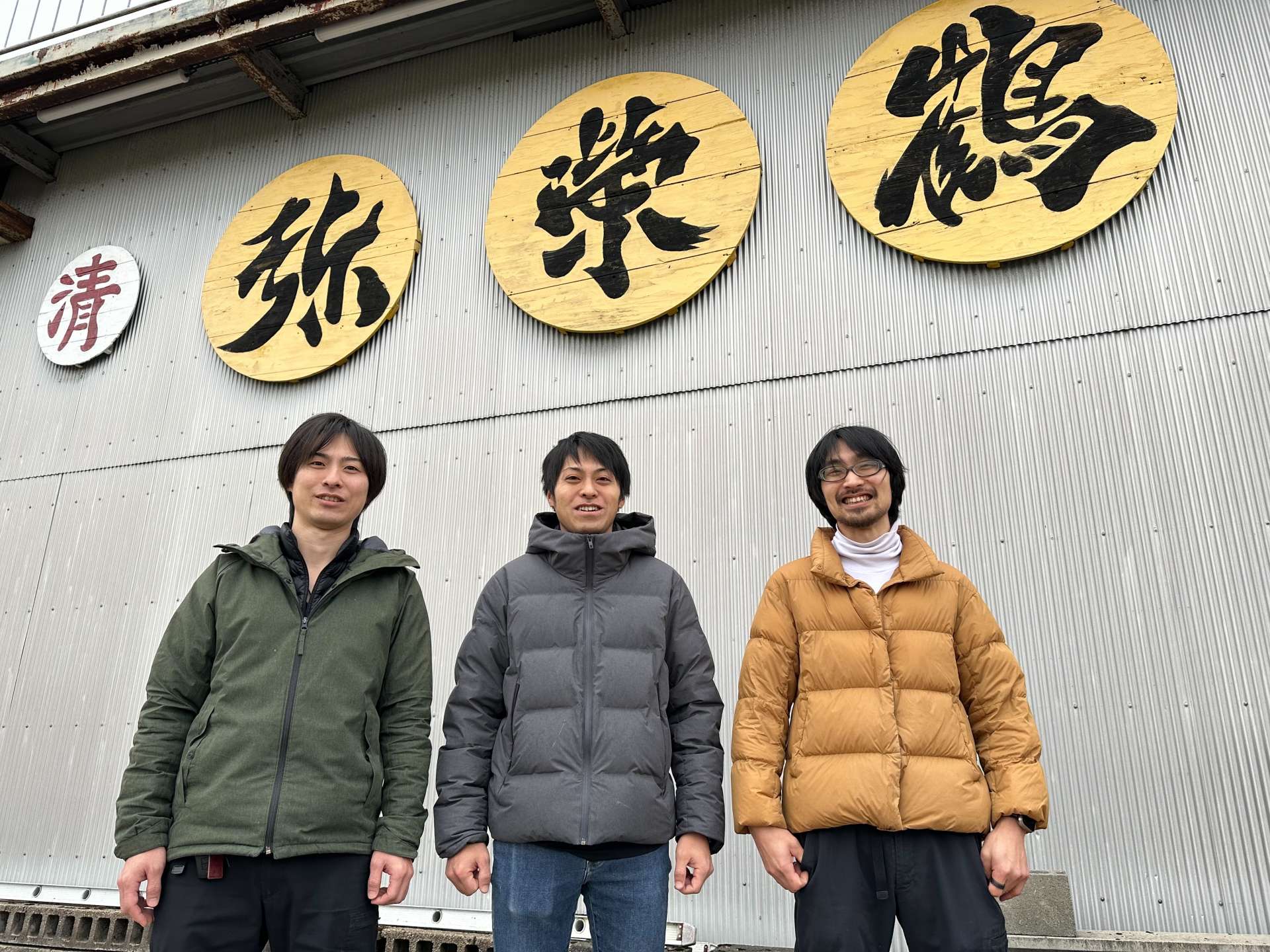
The ever forward-thinking Yukimachi brothers, bringing innovative flair to the world of sake.
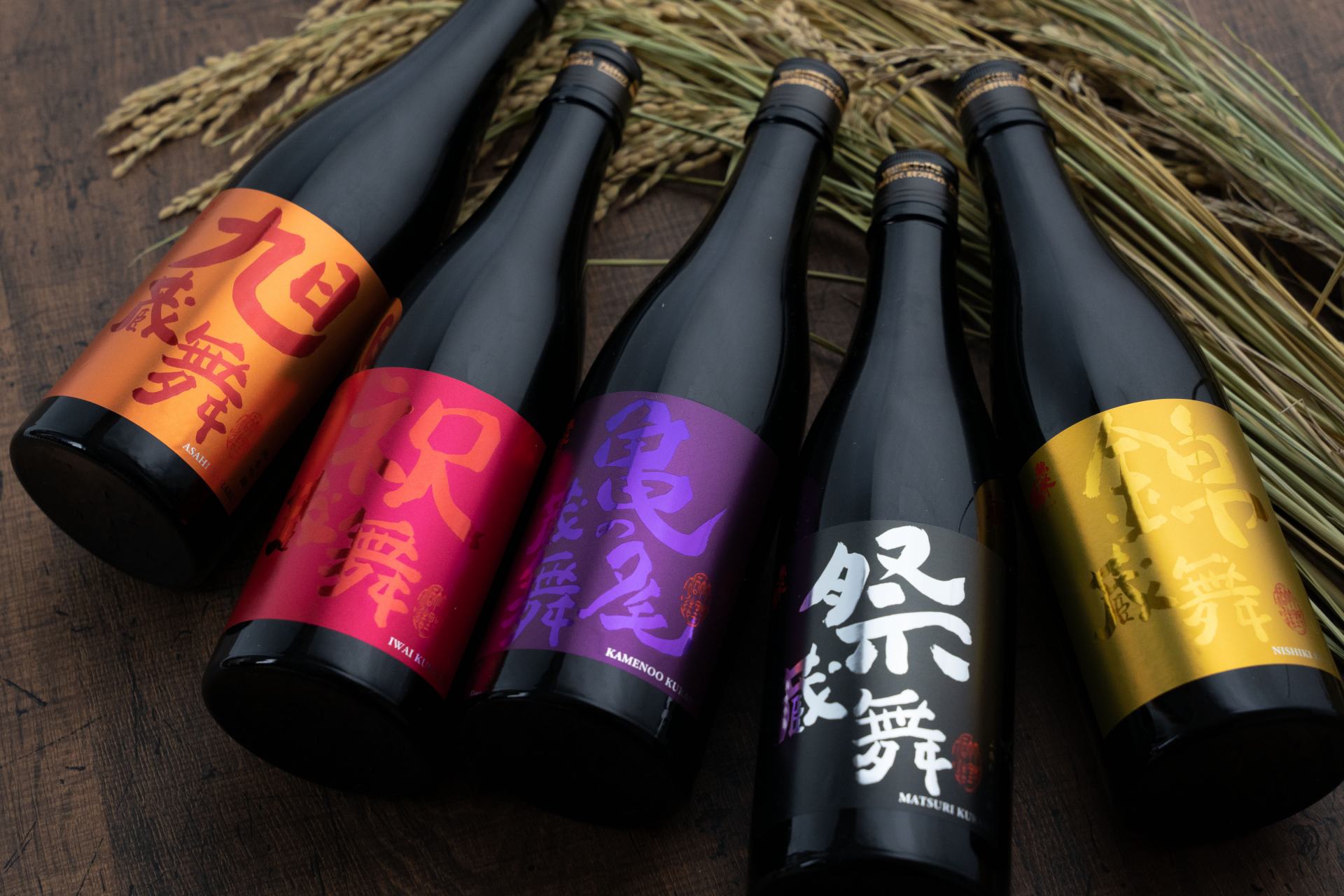
The pure rice sake "Kurabu" series, named after the sake rice varieties.
The Takeno brothers have garnered attention both in Japan and abroad, but still make time in their bustling schedule to offer brewery tours and tastings by appointment.
Annexed just next to the brewery they’ve even opened a bar space named "bar362+3," a reservation-only and irregularly opened boutique bar that uses ingredients exclusively from Kyotango, earning it the nickname of a phantom sake bar.
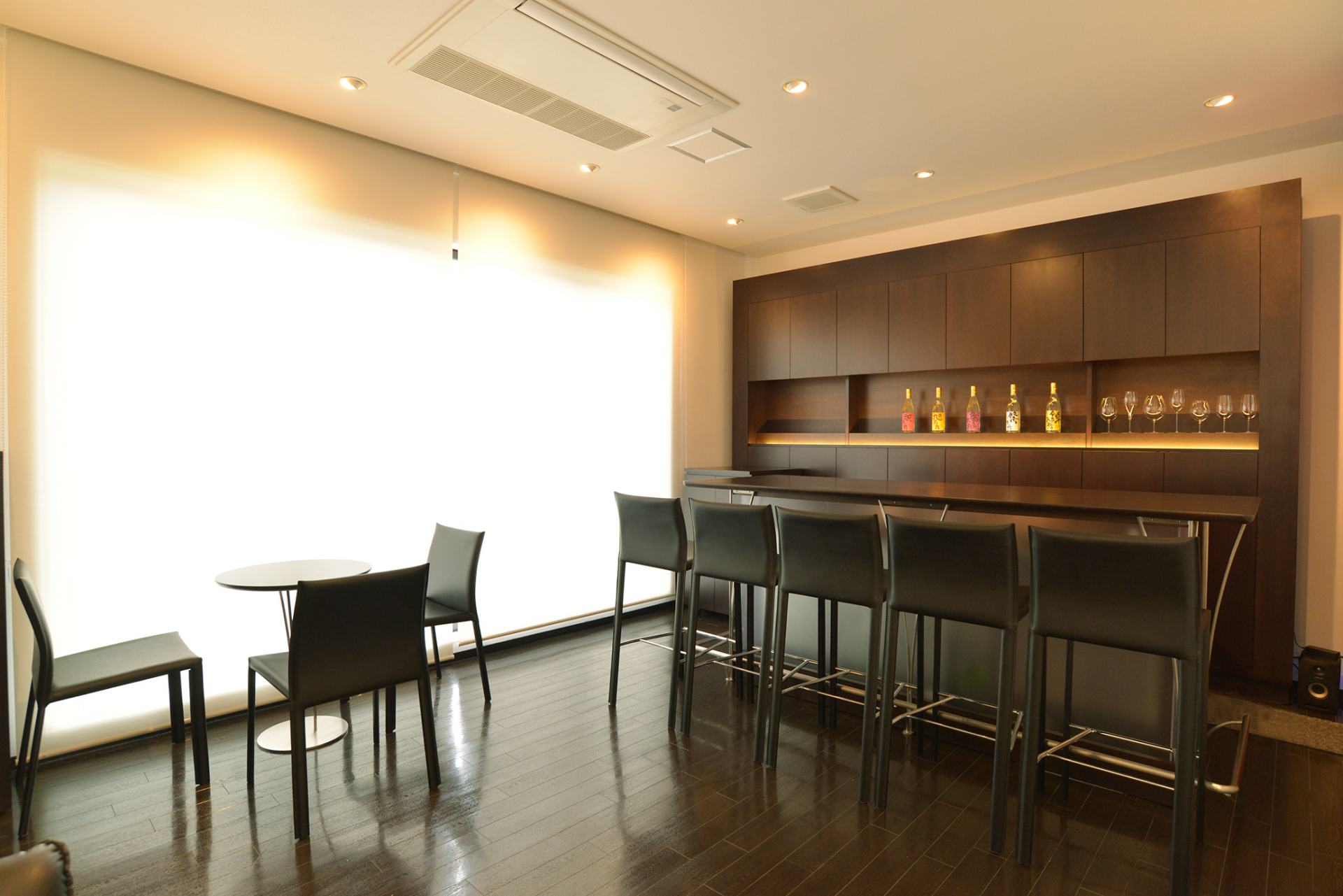
The bar space attached to the brewery, "bar362+3".
Details
- Name in Japanese
-
竹野酒造有限会社
Takeno Sake Brewery Co., Ltd. - Postal Code
- 627-0111
- Address
- 3622-1 Mizonokuchi, Yasaka Town, Kyotango City, Kyoto
- Telephone
- 0772-65-2021
- Business Hours
- 9:00am - 5:00pm (Brewery tours and tastings require advance reservation)
- Closed
- Sundays, national holidays, and irregular Saturdays
- Foreign language website
- Official Website
- Access
- About 10 minutes by car from Mineyama station on the Kyoto Tango Railway Miyafuku Line
[Osaka Prefecture] Akishika Sake Brewery a famed brewery in Osaka known for its integrated production from rice to sake.
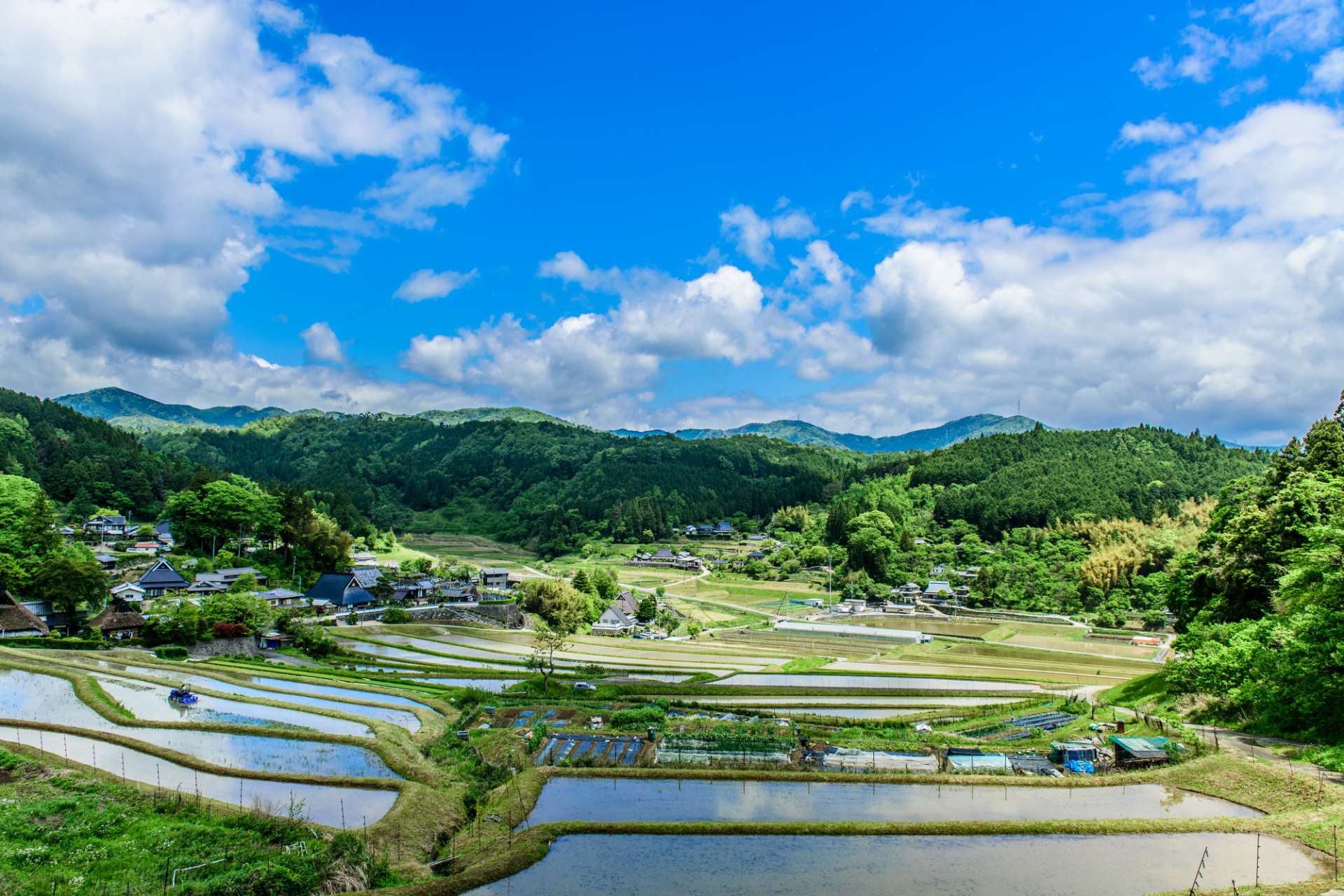
Located at the northernmost part of Osaka Prefecture, Nose Town in Toyono District, known as "the top of Osaka," boasts the serene landscape of satoyama, including terraced rice fields on mountain slopes, fields in the valleys, and mountains adorned with chestnut and oak trees, exuding the atmosphere of old Japan's countryside.
The town is often described as a gallery of countryside and nature.
It is also rich in historical and cultural scents, such as kikusumi (cross-cut sawtooth oak charcoal) used in tea ceremonies, Nose Myoken Mountain with its faith continuing since the Edo period, and Nose Ningyo Joruri with over 200 years of history.
In the eastern part of this town, at the foothills of Utagaki Mountain along National Route 477, stands one of Osaka's representative sake breweries.
Founded in the 19th year of Meiji (1886), Aki Shika Sake Brewery has a history spanning over 130 years across six generations.
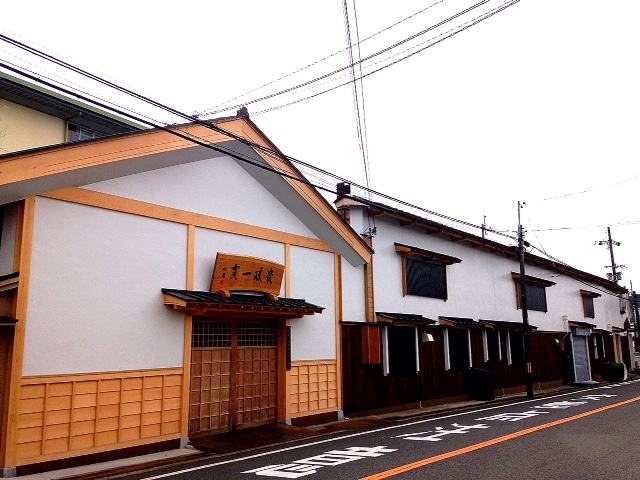
An iconic Osaka brewery still making sake at the foothills of Utagaki Mountain.
Since its founding, the brewery has kept the tradition of rice farming alongside sake brewing, starting the cultivation of sake rice in 1986.
With the motto of "integrated production from sake rice to sake," it began cultivating Yamadanishiki rice without pesticides in 1995 and started cultivating Yamadanishiki and Omachi rice in 2022 using a circular, pesticide-free organic farming method with rice husks, rice bran, and sake lees as fertilizer.
This is why it's said that "Aki Shika's sake, brewing starts with making soil”.
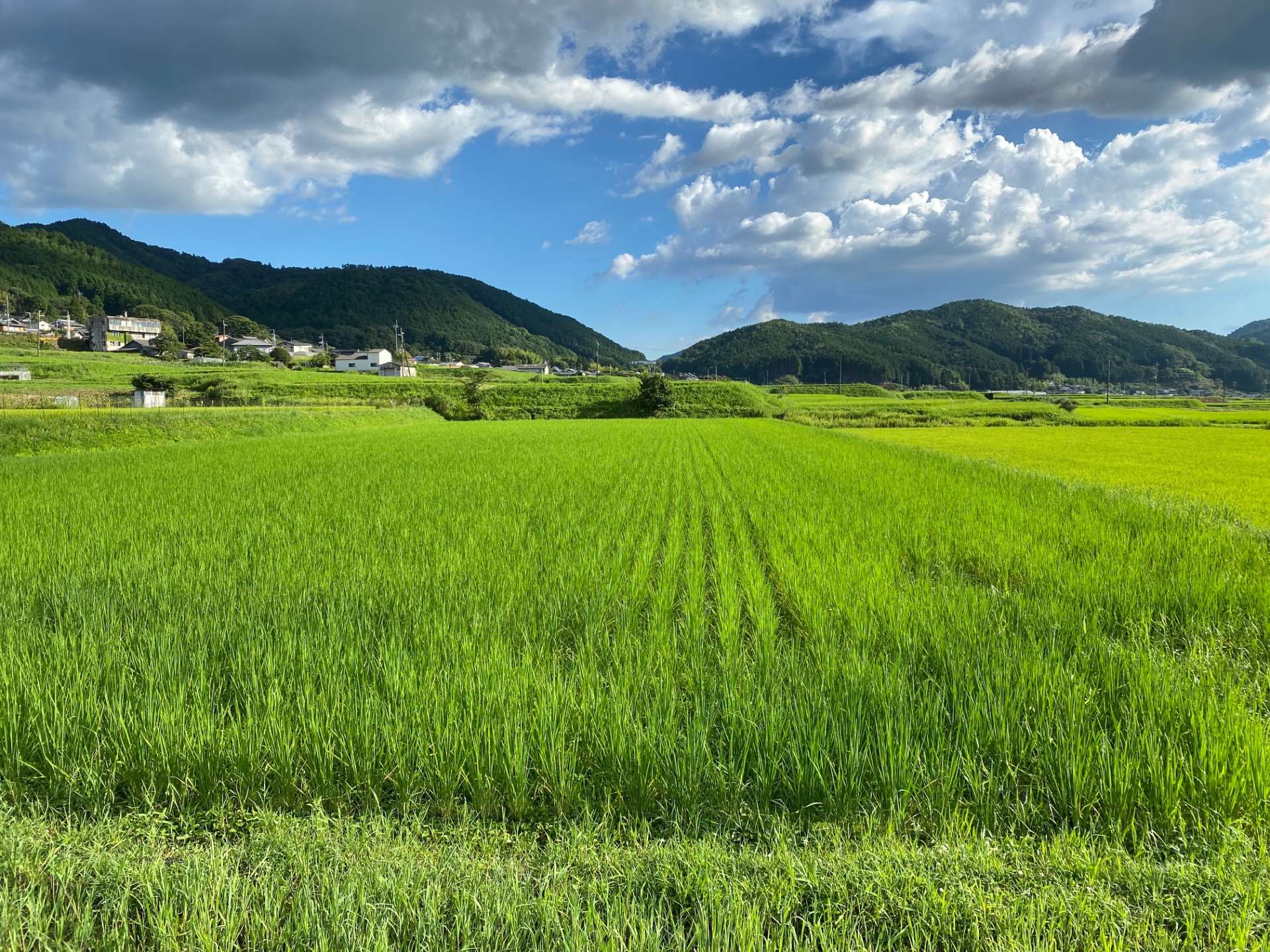
Sake rice is cultivated in the brewery's own fields in Nose Town during the summer.
The flagship brand is Aki Shika, sharing the same name as the brewery.
The founder, Oku Shikanosuke, named it by taking one character from his name and combining it with the word for autumn, symbolizing harvest.
The sake is characterized by a deep umami that captures the sweetness of rice, unique to Japanese sake, and an uncommonly clear and sharp taste with a nice acidity.
This particular blend is ideally served as a mealtime sake, captivating sake enthusiasts from far and wide. At the G20 Osaka Summit 2019, the Junmai Daiginjo blend’s integrated production was chosen for the toast at the dinner, truly representing one of Osaka's prestigious sakes.
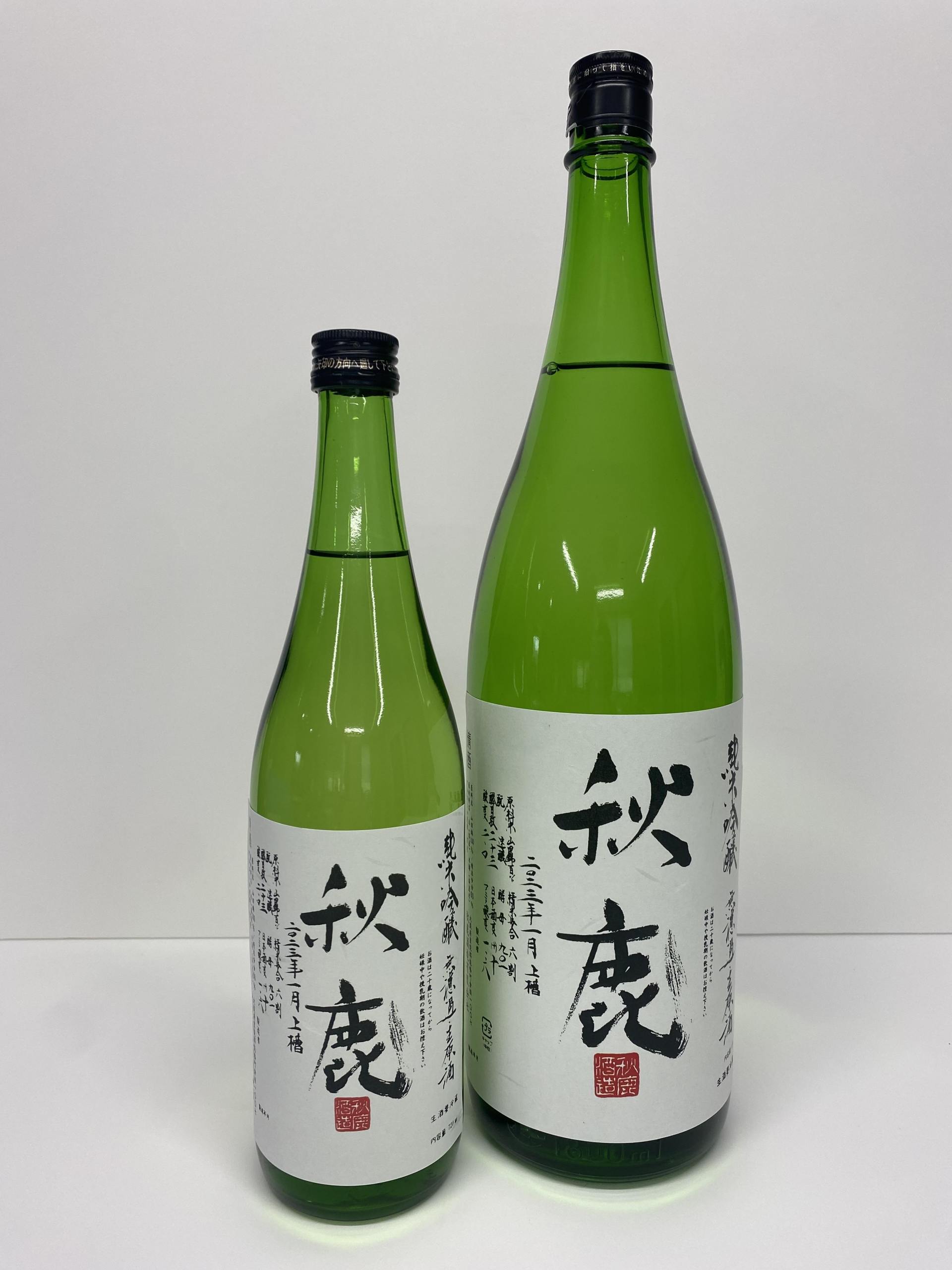
Aki Shika Junmai Ginjo Unfiltered Raw Sake. Considered the most quintessential Aki Shika.
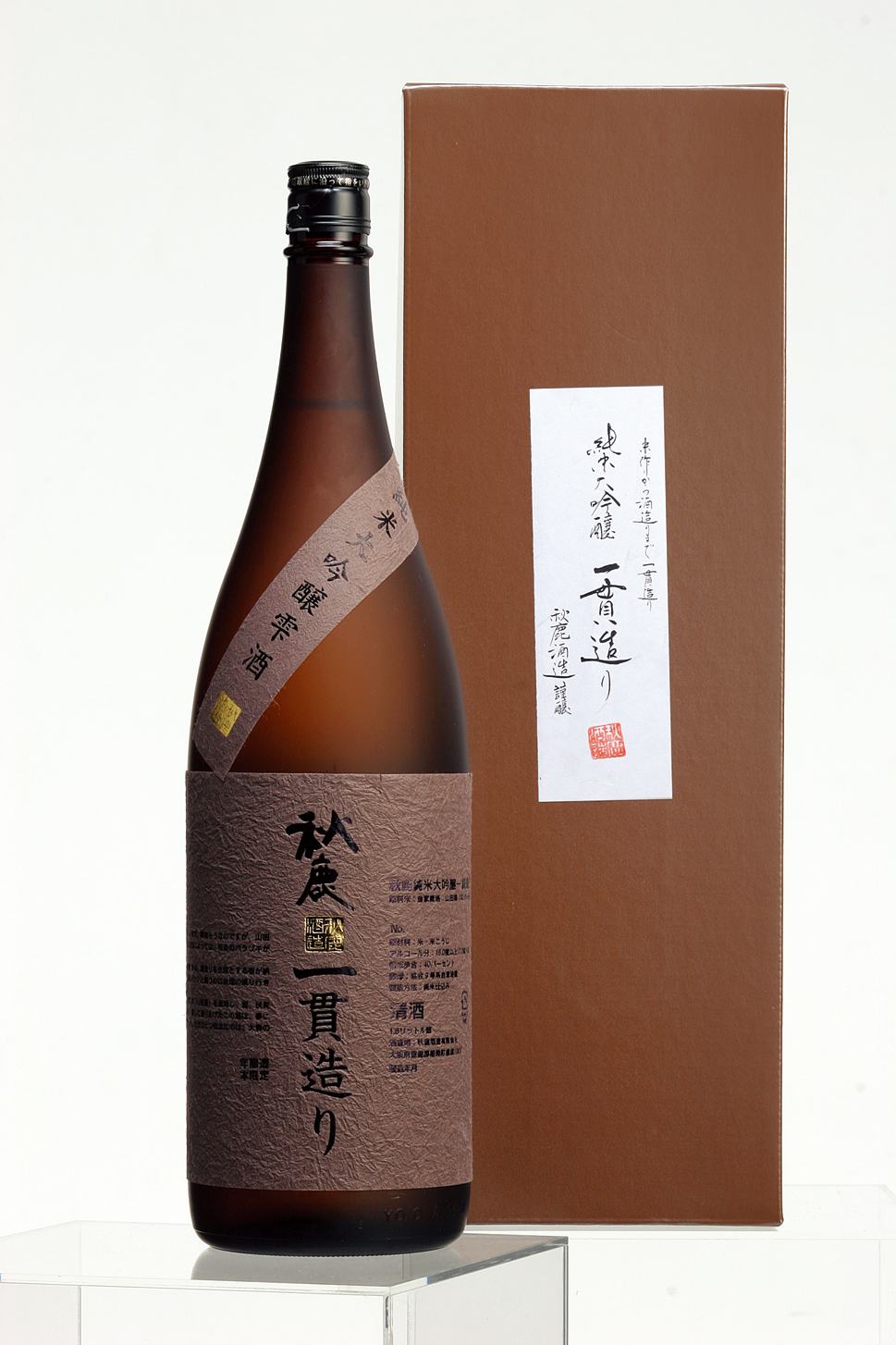
Aki Shika Junmai Daiginjo Integrated Production. The toast sake for G20 Osaka Summit 2019.
Unfortunately, the brewery does not offer tours, but there is an attached shop where purchases can be made on-site.
Visiting to experience the beautiful rural scenery, rich nature, and the atmosphere of Nose where the brewery is located is certainly worth the trip.
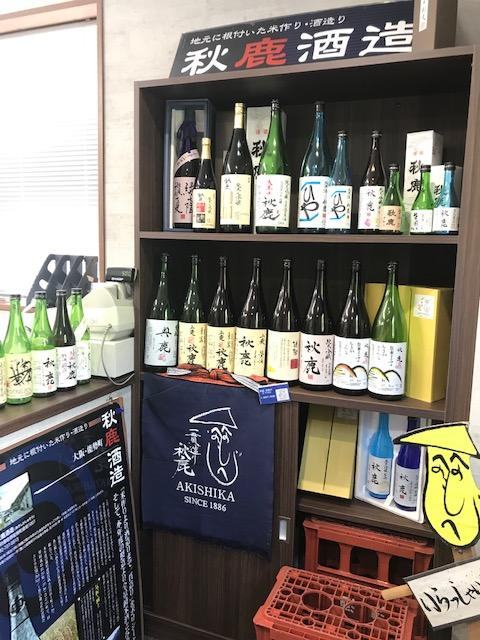
The attached shop at the brewery. Your new favorite awaits.
Details
- Name in Japanese
-
秋鹿酒造有限会社
Akishika Sake Brewery Co., Ltd. - Postal Code
- 563-0113
- Address
- 1007 Kurakaki, Nose Town, Toyono District, Osaka
- Telephone
- 072-737-0013
- Business Hours
- 9:00am - 4:45pm
- Closed
- Saturdays, Sundays, and national holidays (May to September), Sundays and national holidays (October to April)
- Access
- Approximately 26 minutes by Hankyu Bus No. 8 from Myoken-guchi station on the Nose Electric Railway Line to "Utagaki Tozanguchi" bus stop, then about 3 minutes walk
[Nara Prefecture] Nara Toyosawa Sake Brewery is a place for handcrafted sake production set in Nara, a cultural bed for the history of sake.
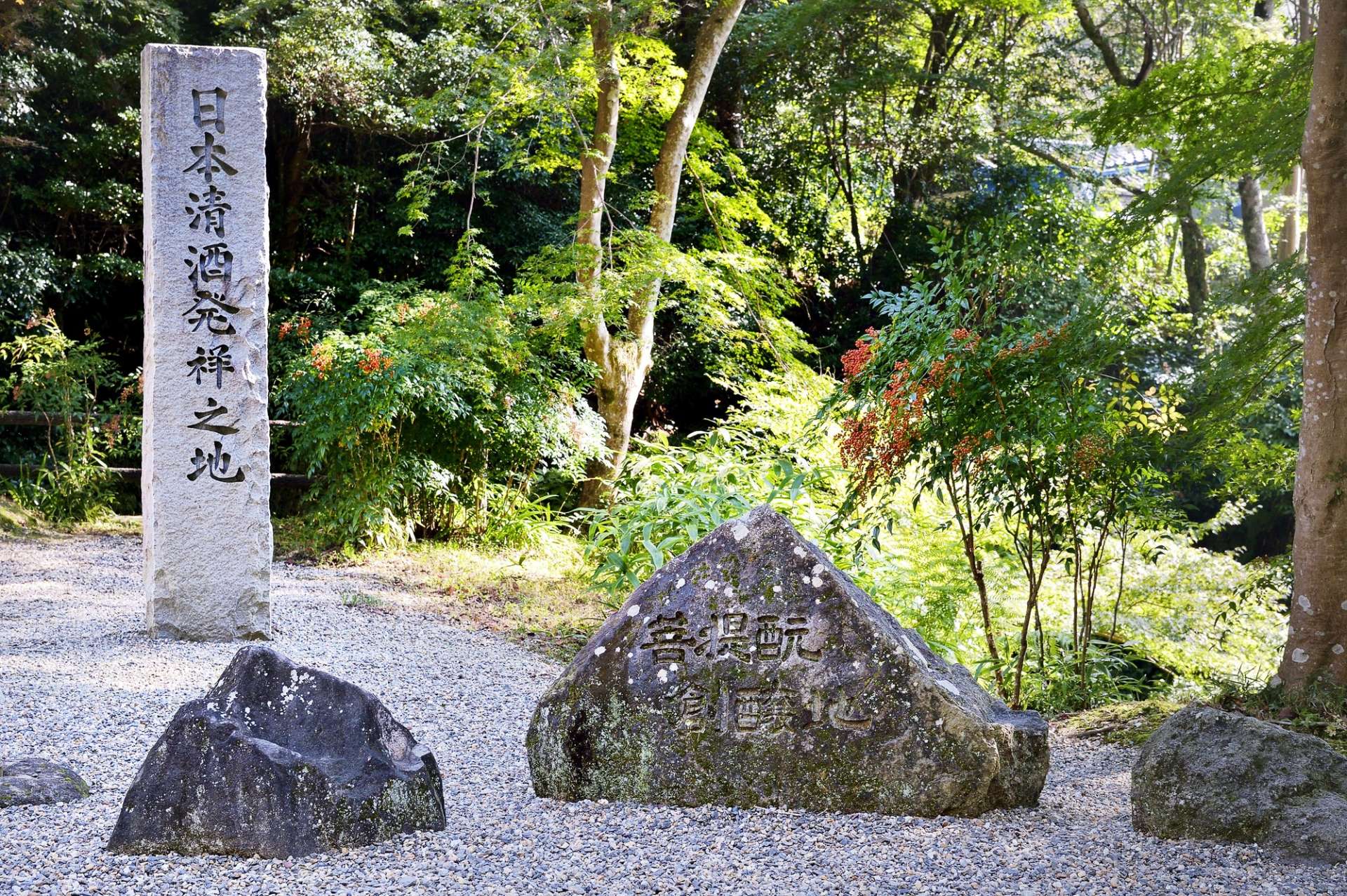
Nara Prefecture, known as the "birthplace of Japan" and "the nation's idyllic field," has long attracted travelers from both within Japan and abroad from ancient times to today.
Its allure lies not only in the cultural assets and structures such as shrines and temples but also in the historic landscape that intertwines as part of the natural environment.
The brewing culture of Nara is no exception, nurtured over a long history as a mainstay draw in the ancient capital.
Sake brewing specifically is at the forefront of local brewing culture. About 600 years ago during the Muromachi period, the brewing technology for clear sake was established with Shoryaku-ji known as the birthplace of sake.
Omiwa Shrine, one of Japan's oldest shrines revered as the deity of sake brewing and Kasuga Taisha Shrine, home to the oldest existing sake brewery built in the Heian period, are among the many spots in Nara deeply connected with the history of Japanese sake.
Currently, there are 27 sake breweries in Nara Prefecture, inheriting the history and tradition of "Nara sake," once synonymous with premium quality. Nara Toyosawa Sake Brewery, one of the three sake breweries in Nara City, was founded as a sake wholesaler in the first year of Meiji (1868).
It later started brewing sake and has stayed in business at its home in Nara since the early Showa period.
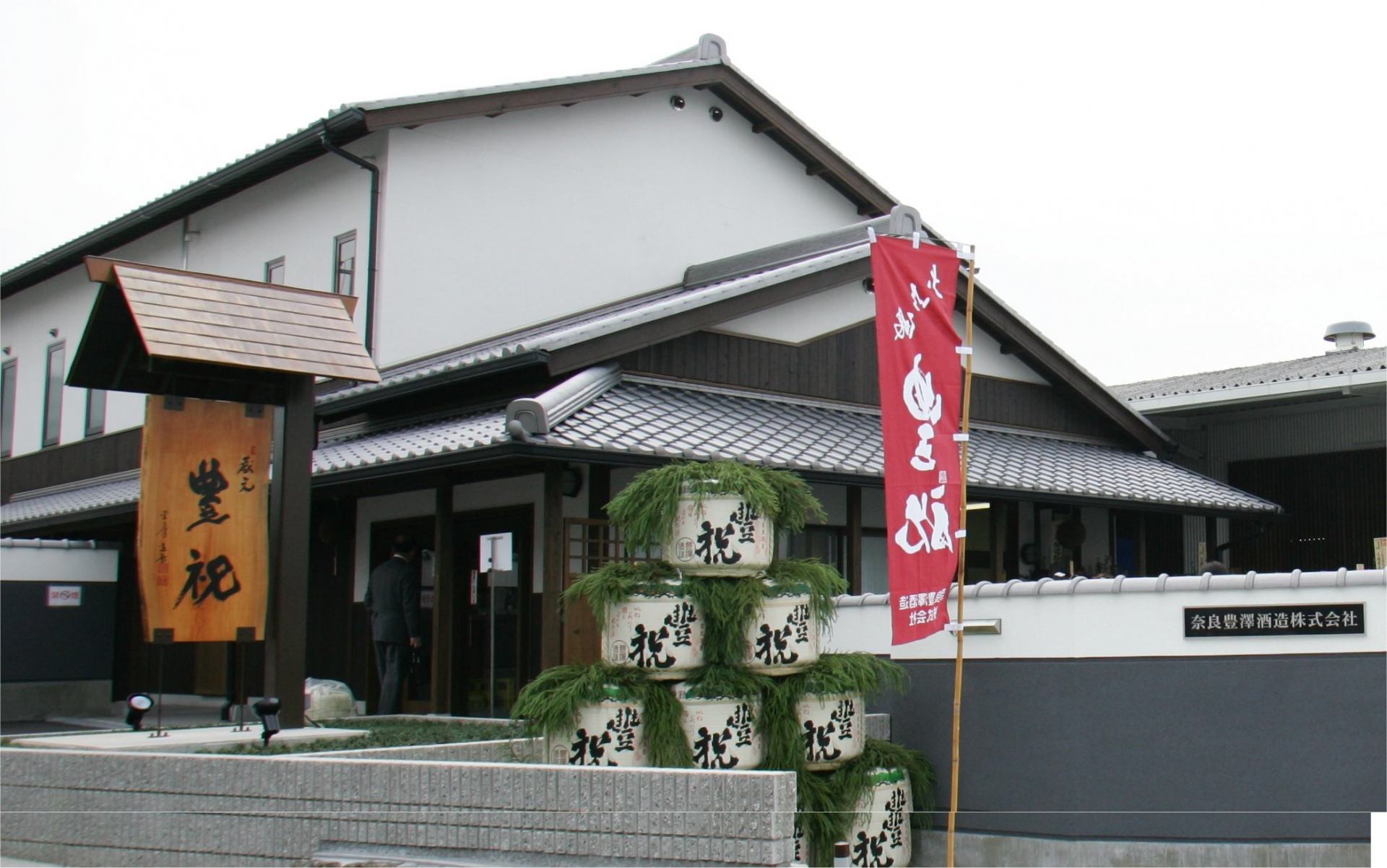
Located near Obi Toki Temple, the oldest maternity shrine and child-granting prayer site in Japan.
Toyohiro is the sake flagship brand. Among them, the "Daiginjo Hoshuku" blend rose as the winner of the gold prize for the 16th time at the 2023 New Sake Competition, a prized sake of the brewery.
It is a highly aromatic and flavorful daiginjo, polished down to 35% of the original size of Yamadanishiki rice, and brewed through long-term low-temperature fermentation to maximize the umami and sweetness of the rice.
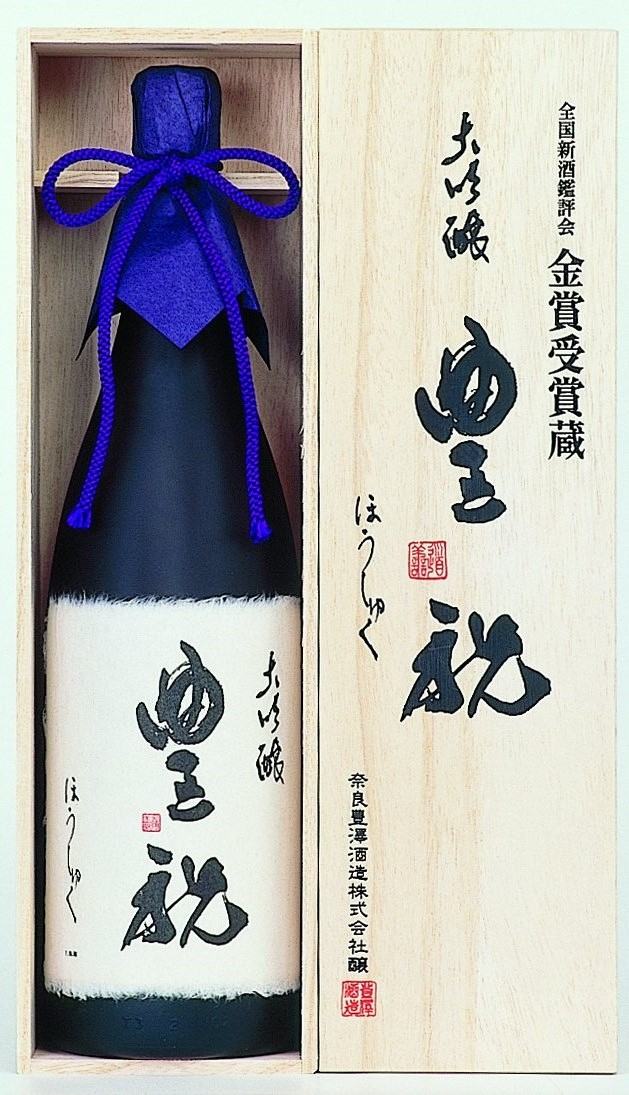
The award-winning "Daiginjo Housyuku” at the New Sake Competition.
The brewery, which has received countless, prestigious awards, upholds the philosophy of "providing high-quality sake to many people." To achieve this, the brand strays from modern sake brewing machinery, and keeps to the traditional method of carefully preparing most of the process by hand without mechanization.
The fact that about 80% of the sake brewed is designated as special name sake, such as pure rice sake, is a testament to this.
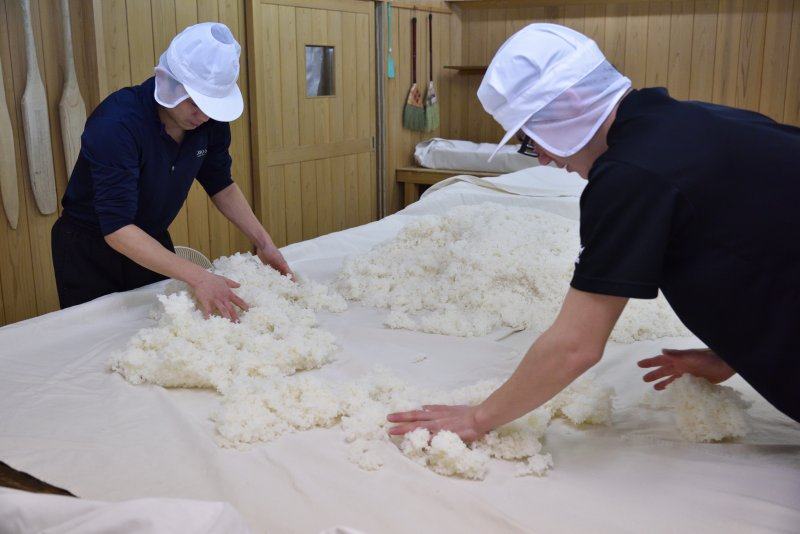
Seasonal brewery tours available exclusively by reservation.
Details
- Name in Japanese
-
奈良豊澤酒造株式会社
Nara Toyosawa Sake Brewery Co., Ltd. - Postal Code
- 630-8444
- Address
- 405 Imachi-cho, Nara City, Nara
- Telephone
- 0742-61-7636
- Business Hours
- 8:00am - 5:00pm (Brewery tours in October, November, February, March at 10:30am & 3:30pm, by reservation only, from 1 to 40 people, with souvenir for 500 yen)
- Closed
- Saturday, Sunday, public holidays (Brewery tours available on Saturdays, Sundays, and public holidays)
- Access
-
(1) About a 10-minute walk from Obitoke station on the JR Manyo Mahoroba Line (Sakurai Line)
(2) About a 15-minute ride on the Nara Kotsu Bus from Kintetsu-Nara station on the Kintetsu Nara Line, then a 5-minute walk from the "Kami Sanbashi" bus stop
[Wakayama Prefecture] From the rice heartland of Wakayama, the innovative brewery Heiwa Shuzo delivers the "Climate of Kishu"
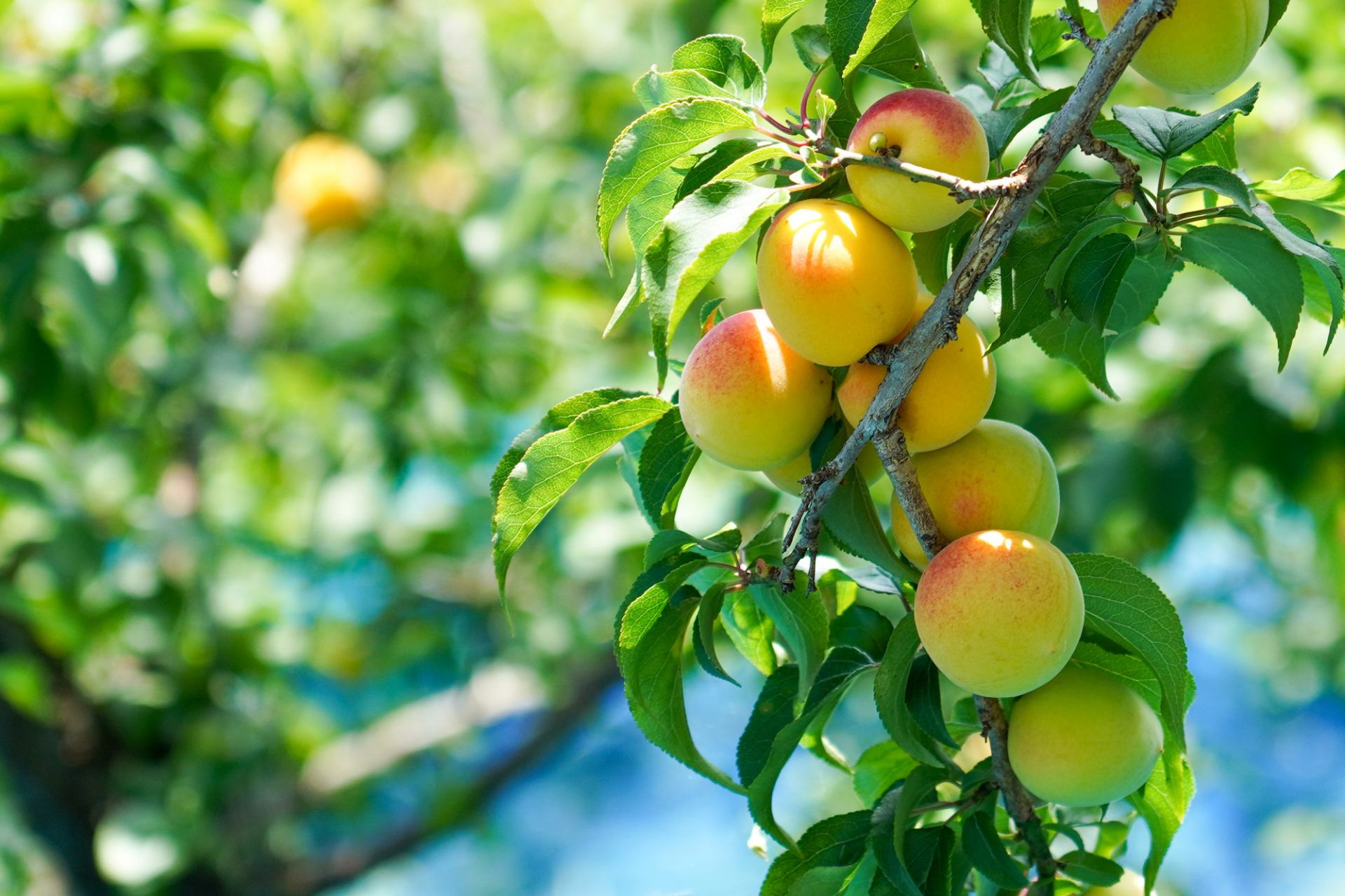
Wakayama Prefecture is home to a full tapestry of iconic, Japanese authenticity across its many coveted destinations. From Koyasan and Kumano Sanzan, registered as World Heritage Sites as "Sacred Sites and Pilgrimage Routes in the Kii Mountain Range, Wakayama Castle hailing from the Kishu Tokugawa branch of the three Tokugawa family branches, to thrilling sites like Adventure World known for raising giant pandas for over a quarter-century and Shirarahama known for its beautiful white sand beaches.
The climate is warm and rainy, with deep forests covering over 80% of these lands once called "the land of trees." Local harvest boast a crop of fruits like mandarins, plums, peaches, and persimmons, with many nationally recognized brands.
The area is few large flat areas suitable for rice paddy farming, making Kainan City in the Mizonokuchi area a rare site that thrived with rice cultivation since ancient times. Even from the Jomon period Mizonokuchi archaeological site, remnants of settlements and rice fields have been discovered.
It was once a prosperous region for sake brewing, benefiting from large diurnal temperature variations in the basin and abundant groundwater from Koyasan.
Heiwa Shuzo, with nearly a century of history since its establishment in 1928, was one such place that boomed in the area.
After a suspension during World War II that lasted until the 1980s, this spot once operated exclusive as a contract brewery for major manufacturers before later shifting to brewing under its own brand. Since 1989, it has won the gold prize four times at the National New Sake Competition.
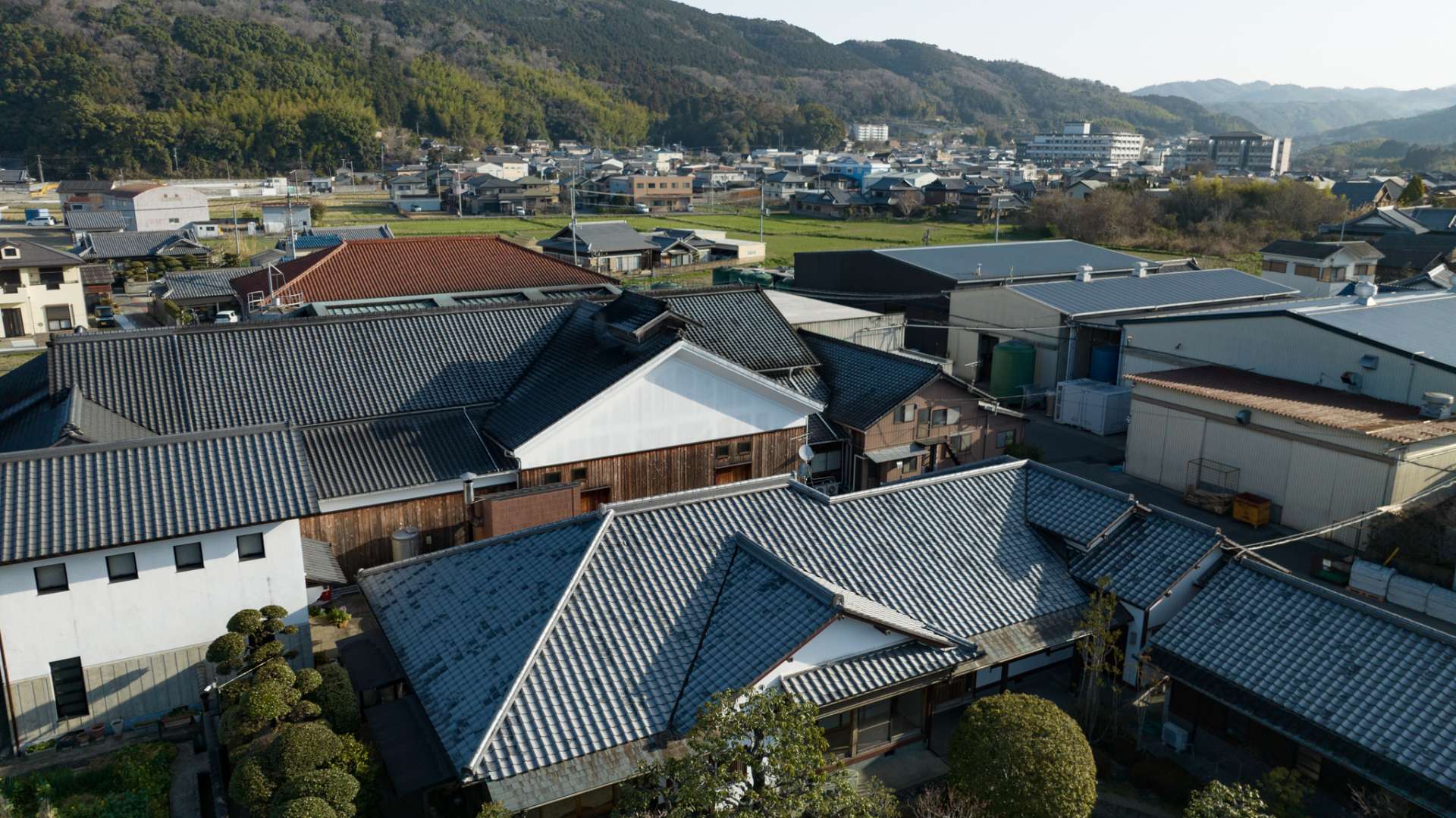
Brewery located in Mizonokuchi, Kainan City, an area long known for rice cultivation.
The flagship brand is KID, characterized by a soft, clean taste reminiscent of Wakayama's gentle waters, with a pleasant, mellow finish. The name embodies the brewers' desire to "deliver the climate of Kishu through sake".
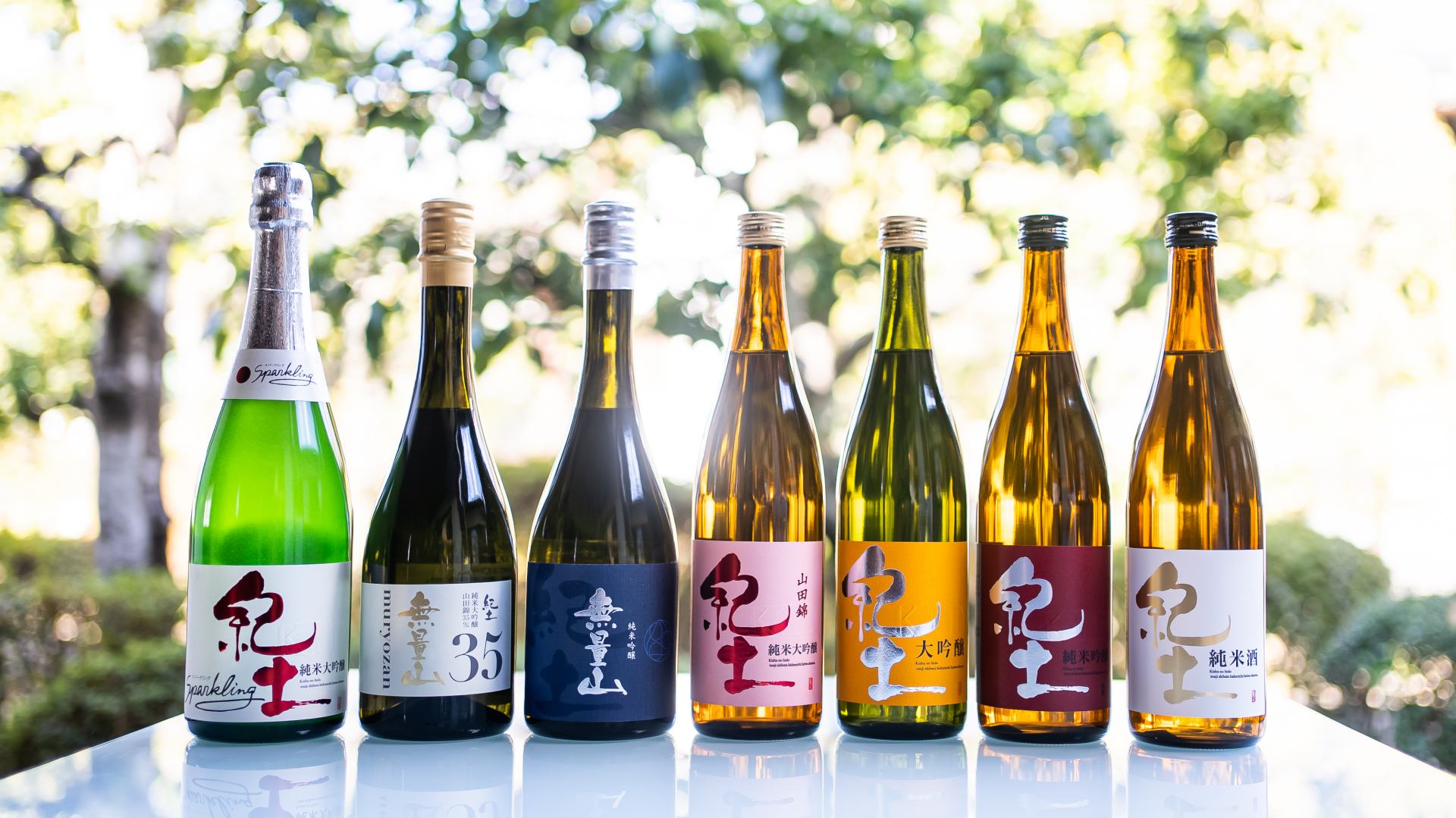
The lineup of KID and its pinnacle series, Muryozan.
Some of the sake rice used in the "Agara no Ta de Sodateta" series of KID is even made in cooperation with local farmers, with the Toji (master brewer) and brewery workers participating in everything from seeding to planting and harvesting.
It's a community-rooted brewing process that also contributes to regional revitalization.
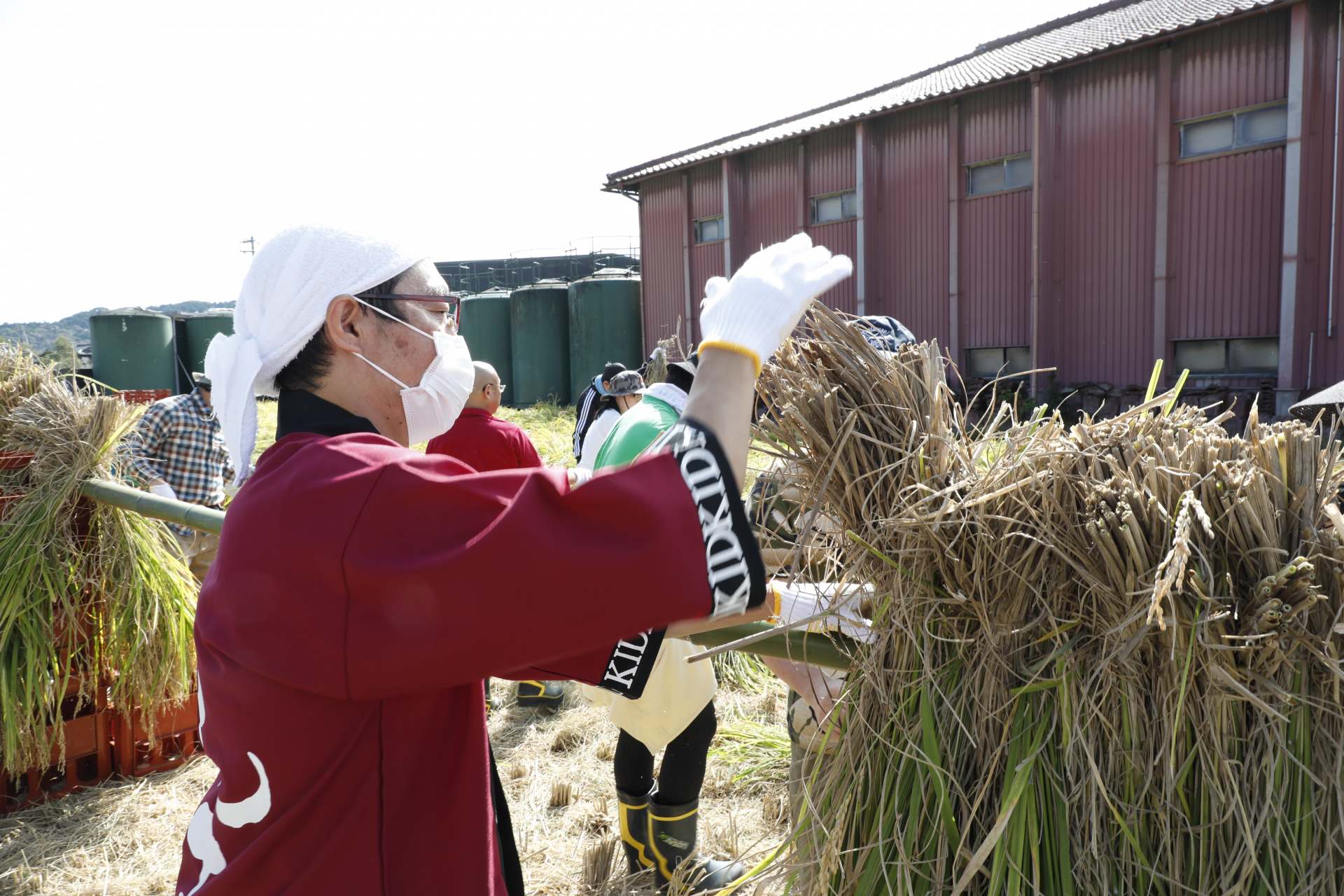
Events such as rice harvesting experiences are also held.
Moreover, the pride of their sake and liqueurs made from Wakayama's specialty fruits, including plums, "Tsuruume”, represents another standout product of Heiwa Shuzo.
Every batch is made without using any acidulants, flavorings, or colorings, preserving the natural flavor and aroma.
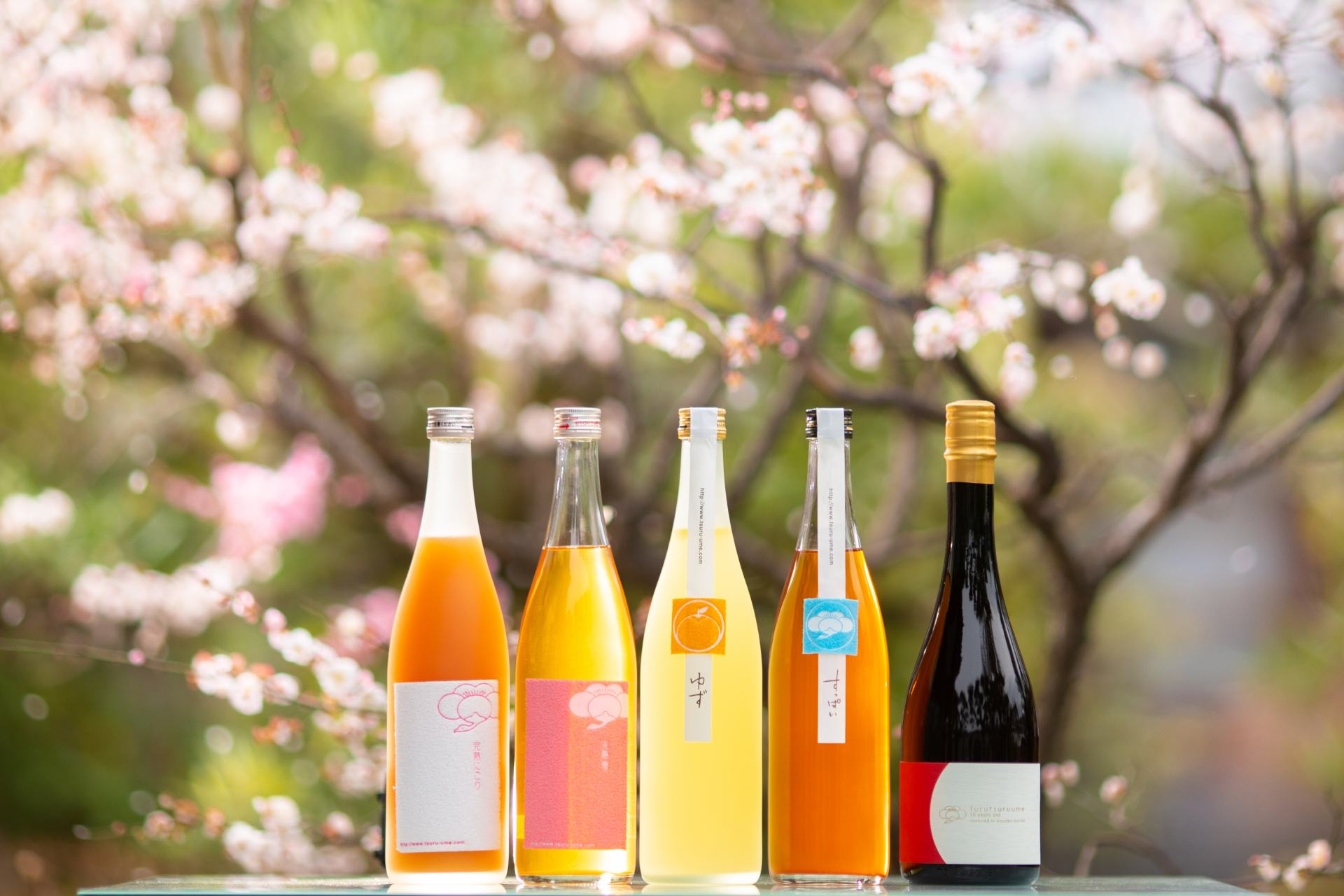
The "Tsuruume" series of liqueurs made with Japanese sake and fruits from Wakayama.
As a bonus, the brand has even ventured into creating new chances to enjoy a drink by focusing on the fun and delicious taste of beer with its new line of craft beers.
Integrating sake brewing expertise such as microbial management and fermentation technology into beer brewing has developed a unique sensibility you’ll only taste here.
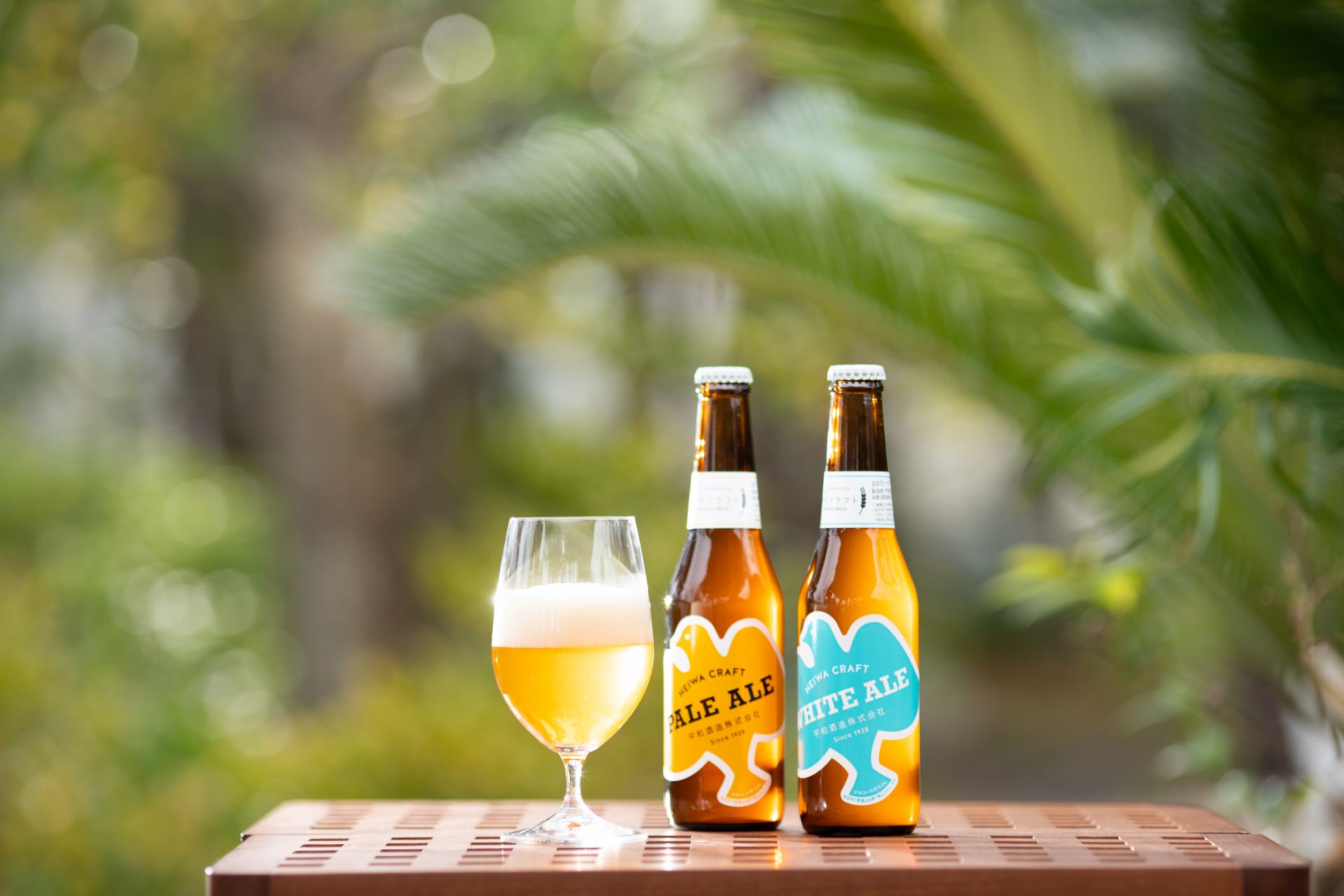
Heiwa Craft craft beer, available in 12 varieties including limited-time products.
Although the brewery does not offer tours or direct sales, the brand opened their first antenna shop in the Kino Wakayama complex directly connected to Wakayama City Station as of June, 2020. .
The shop and standing bar are staffed by the Toji and brewery team.
Details
- Name in Japanese
-
平和酒造株式会社
Heiwa Sake Brewery Co., Ltd. - Postal Code
- 640-1172
- Address
- 119 Mizonokuchi, Kainan City, Wakayama
- Telephone
- 073-487-0189
- Access
- About a 30-minute drive from Kainan station on the JR Kinokuni Line (Kisei Main Line)
- Name in Japanese
-
平和酒店 キーノ和歌山店
Heiwa Sake Shop Kino Wakayama Store - Postal Code
- 640-8203
- Address
- Kino Wakayama 2F, 39 Higashikuramaecho, Wakayama City, Wakayama
- Telephone
- 073-431-1178
- Business Hours
- 11:00am - 8:00pm (Last order for food and drink at 7:30pm)
- Closed
- According to Kino Wakayama schedule
- Access
- Immediate walking distance from Wakayamashi station on Nankai lines & JR Kisei Main Line
[Mie Prefecture] World-renowned fine sake "Hanzo" crafted by a young Toji at Ota Sake Brewery
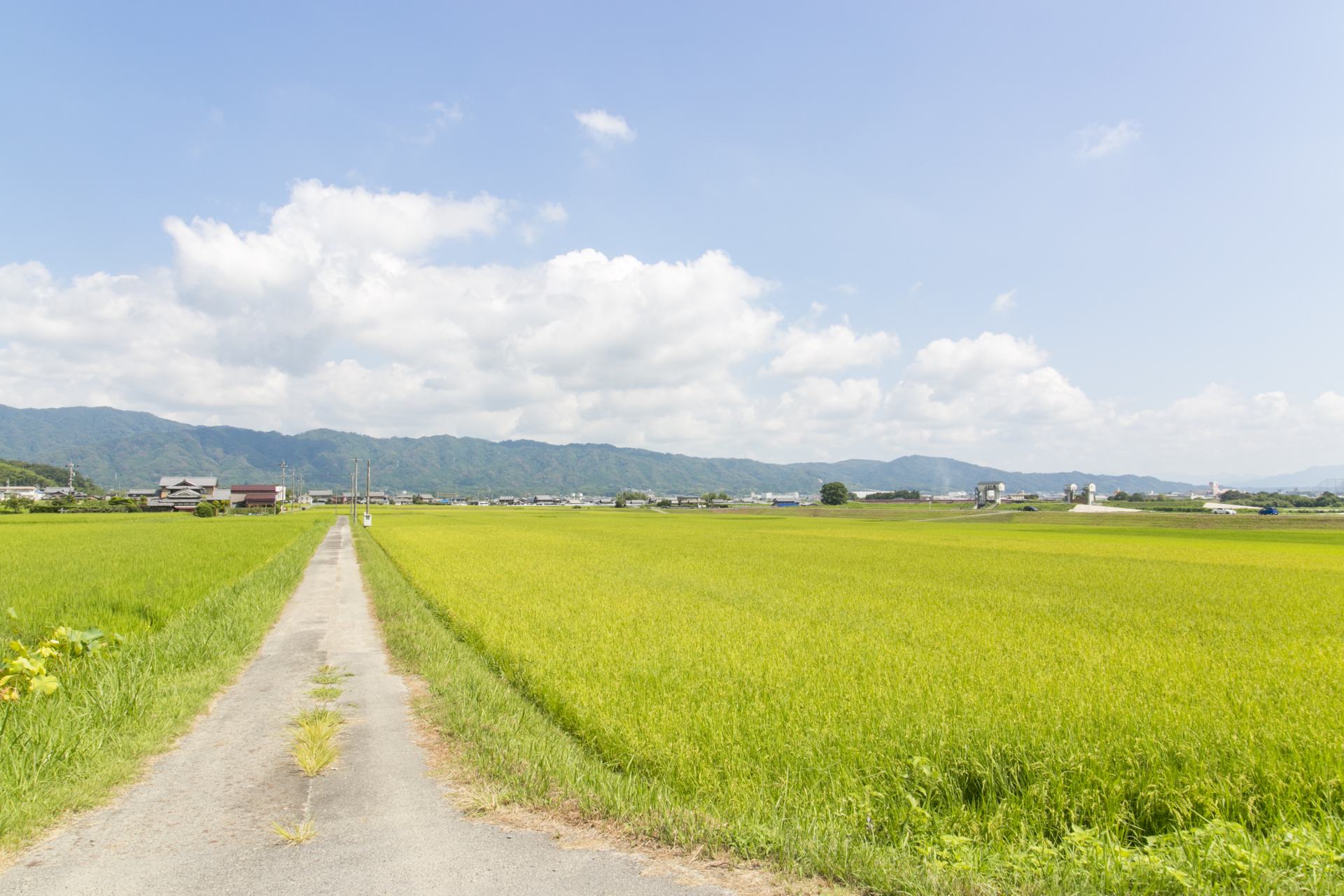
Located in the northwestern part of Mie Prefecture, Iga City borders Kyoto, Shiga, and Nara Prefectures.
The city thrived as a crucial transport hub from ancient times, with roads leading to Kyoto, Nara, and Ise. During the Edo period, it developed as the castle town of Iga Ueno Castle, ruled by the Iga domain lord Todo Takatora, and as a lodging town for pilgrims to Ise Jingu.
Even today, many historical buildings remain in the castle town, with many old shops continuing their business since then.
The climate features a typical inland climate with stark differences between the hot and humid summers and the bitterly cold winters, alongside significant temperature variations between morning, evening, and midday. This climate has historically produced high-quality sake rice.
The area also has a high percentage of paddy fields within its agricultural land, making rice harvests among the top in the prefecture.
Most of the sake rice used by sake breweries in the prefecture is said to be from Iga, supporting a culture of sake brewing that has been passed down through generations.
Ota Sake Brewery, established in the 25th year of Meiji (1892) and with a history of over 130 years, is nestled in this region.
It has preserved and passed down traditional sake brewing methods, using subterranean water from the Nunobiki mountain range as brewing water, emphasizing the importance of sake rice, and reviving the use of wooden barrels.
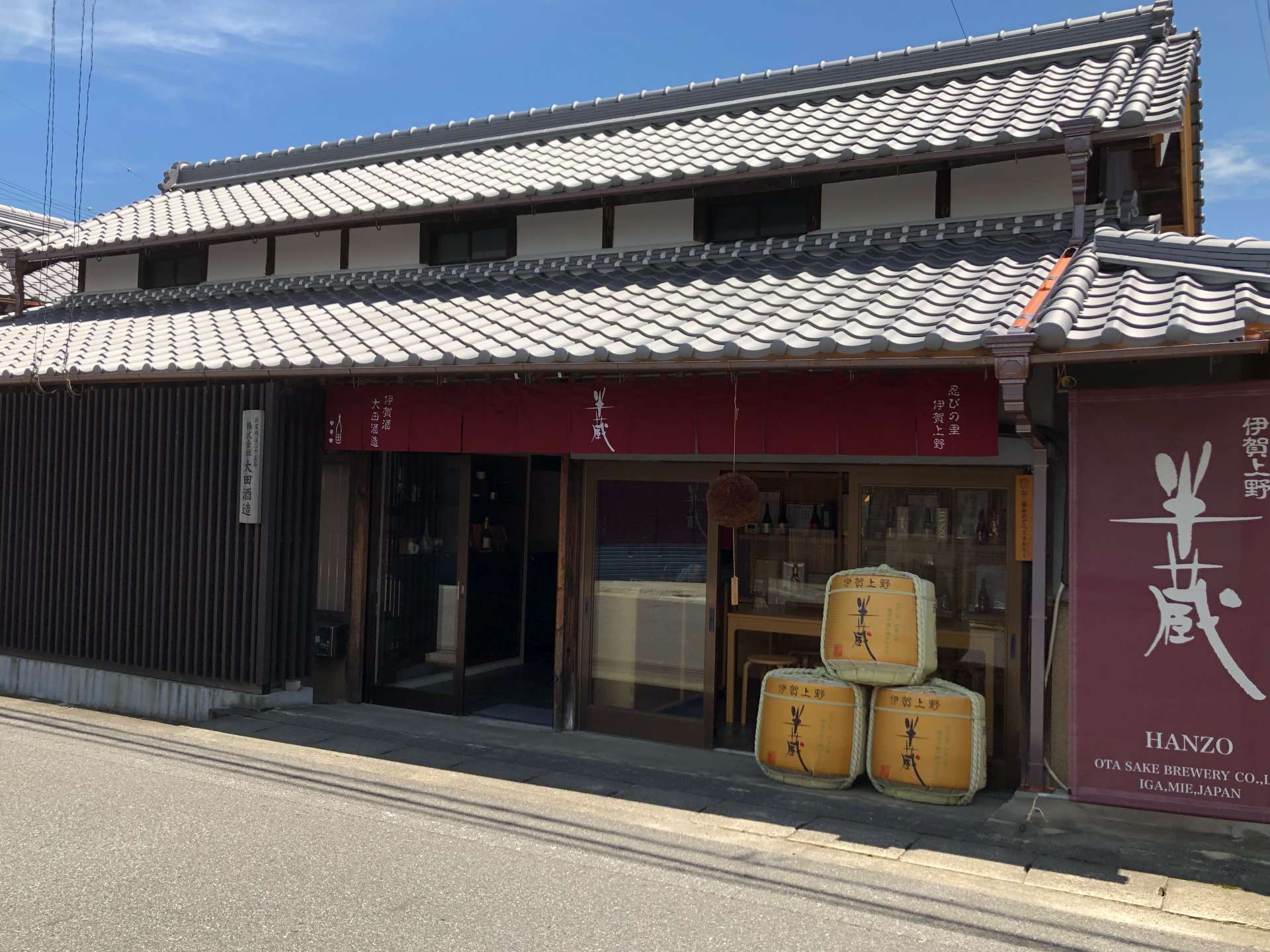
The brewery's exterior, both staunchly classic and majestic.
The flagship brand is "Hanzo”, named after the Iga ninja Hattori Hanzo.
The sake, carefully brewed using Mie and Iga produced sake rice along with the soft underground water from the Iga Basin, has won various awards not only in Japan but also at international competitions.
At the 2016 G7 Ise-Shima Summit, "Hanzo Junmai Daiginjo Polish 40" was served as the toast sake during the working dinner, earning the highest honor.
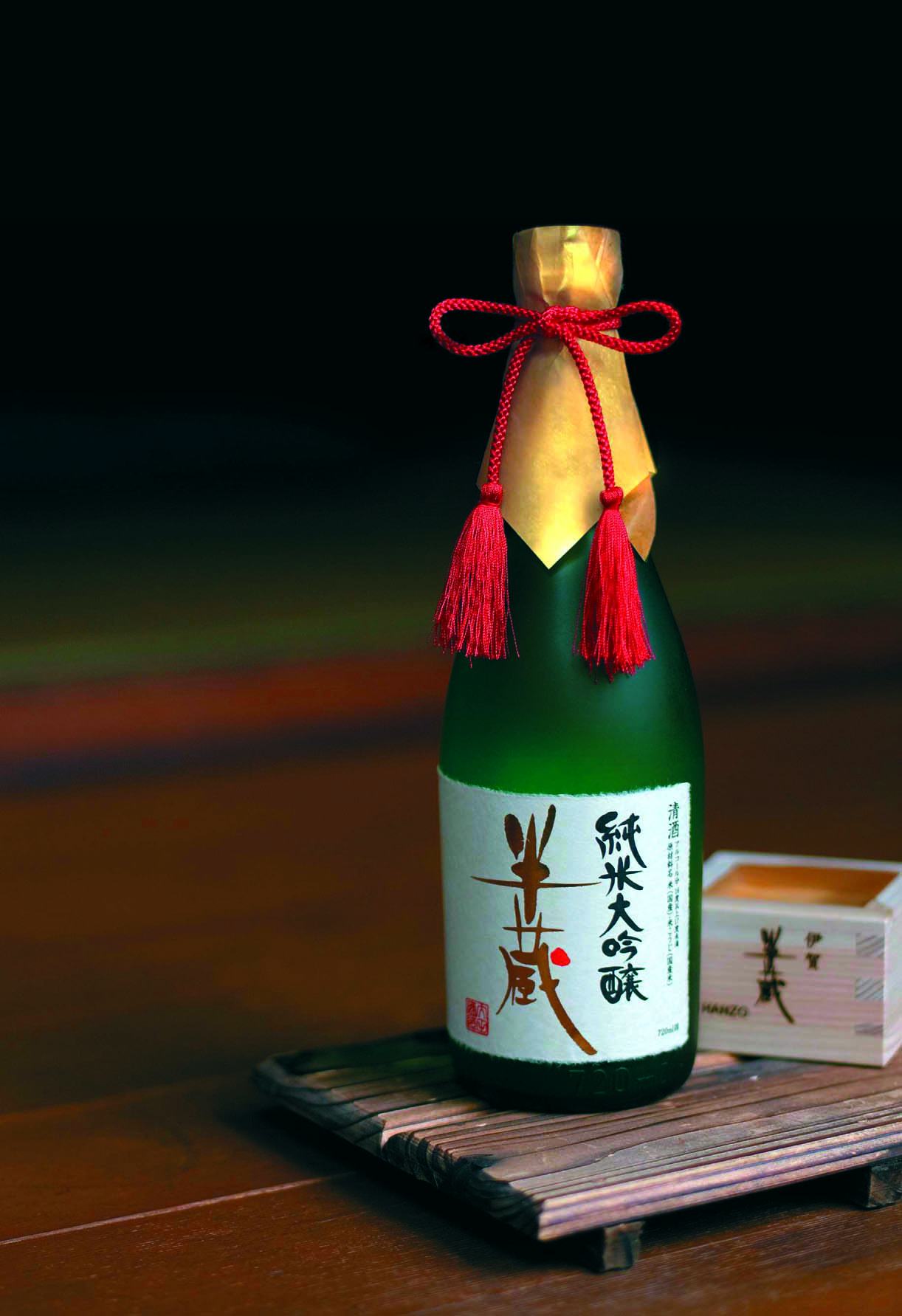
Hanzo Junmai Daiginjo Polish 40, as tasted by world leaders at the G7 Ise-Shima Summit.
Ota Sake Brewery, while achieving numerous honors and becoming a world-renowned brewery, never stops its pursuit of further evolution. In 2017, Yuki Ota, who studied brewing at the Tokyo University of Agriculture's Junior College and the National Research Institute of Brewing in Hiroshima, and apprenticed at Sake Breweries within the prefecture, succeeded as the seventh generation.
With the desire to create sake that connects "people with people" and "food with people," he crafted the new product "Hanzo &". In 2019, at the age of 24, he became the youngest Toji in Mie Prefecture, carrying the full responsibility of sake brewing at the brewery at the age of 29.
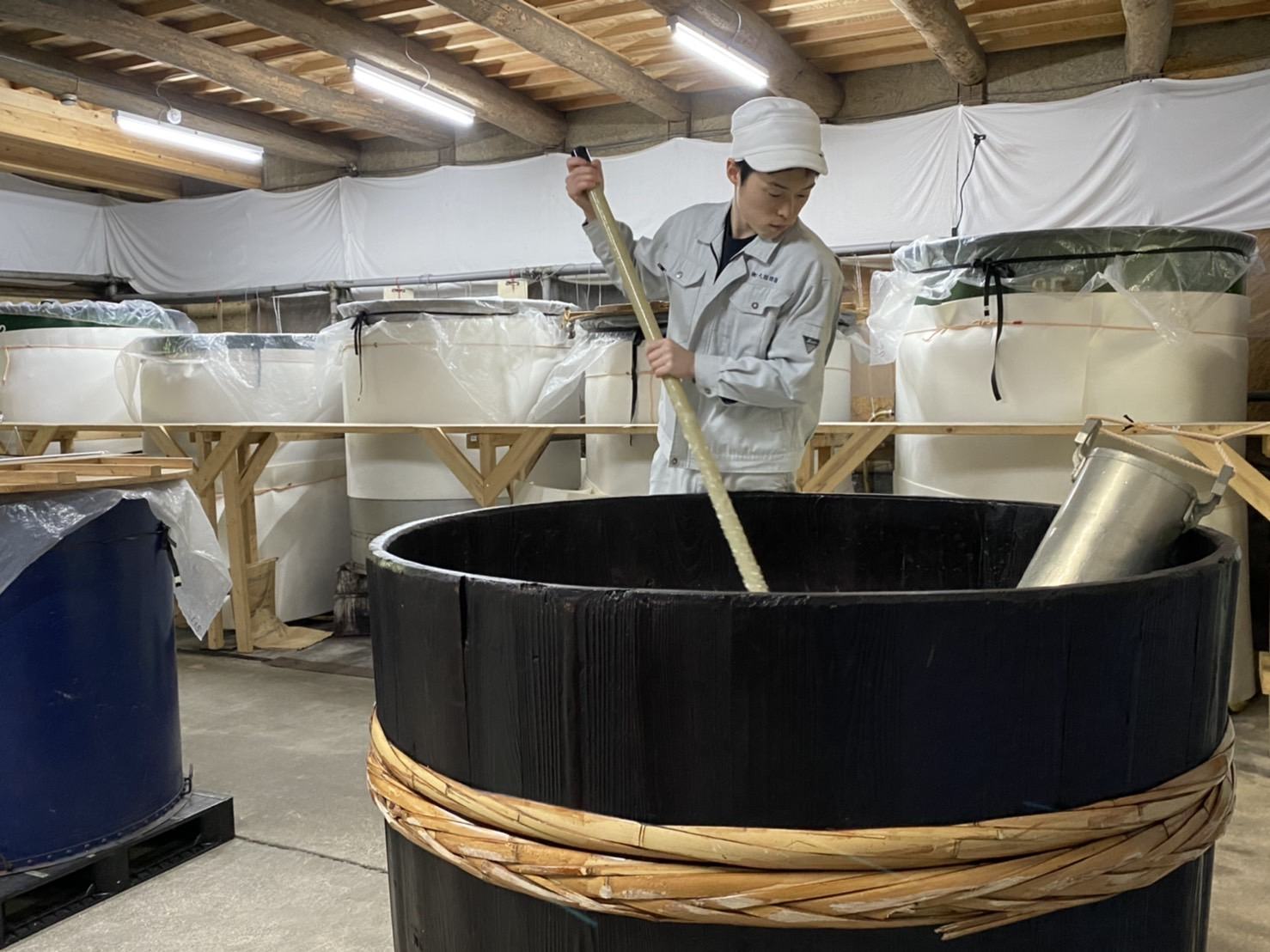
The seventh-generation brewery owner and Toji, Yuki Ota.
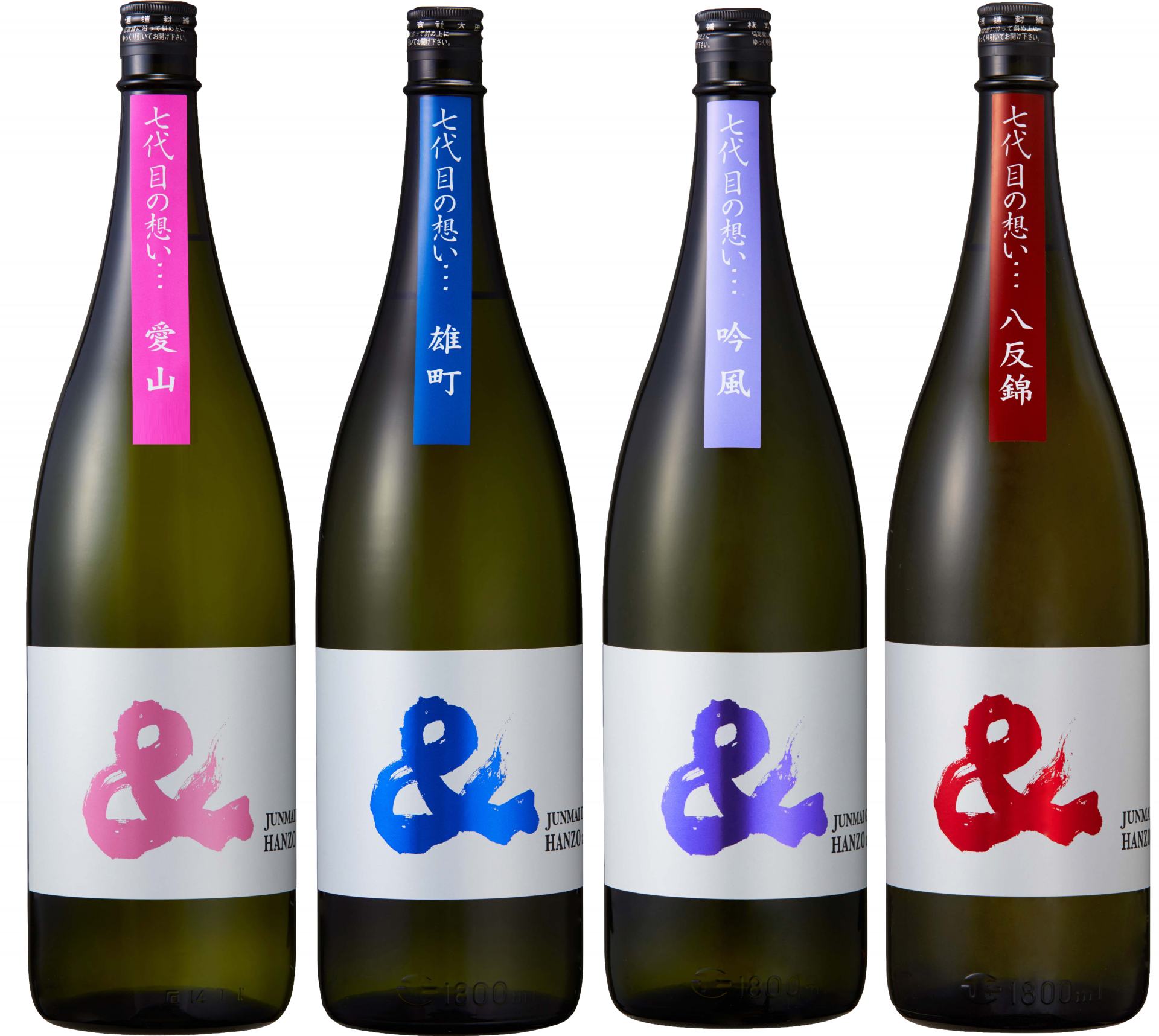
The new series "Hanzo &" produced by Yuki himself.
Details
- Name in Japanese
-
株式会社大田酒造
Ota Sake Brewery Co., Ltd. - Postal Code
- 518-0121
- Address
- 1365-1 Uenojō, Iga City, Mie
- Telephone
- 0595-21-4709
- Business Hours
- 9:00am - 5:00pm (Tours held seasonally by reservation. The sales shop is open from 10:00am - 7:00pm, Sundays from 9:00am - 6:00pm)
- Closed
- Saturday, Sunday, public holidays (The sales shop is closed on Wednesdays)
- Access
- About a 10-minute ride on the Mie Kotsu bus Ueno Nabari line from Uenoshi station on the Iga Railway Iga line to "Uenoshou" bus stop, then about a 5-minute walk
[Hyogo Prefecture] A rare female Toji brews sake at the brewery closest to Himeji Castle, Nadagiku Sake Brewery.
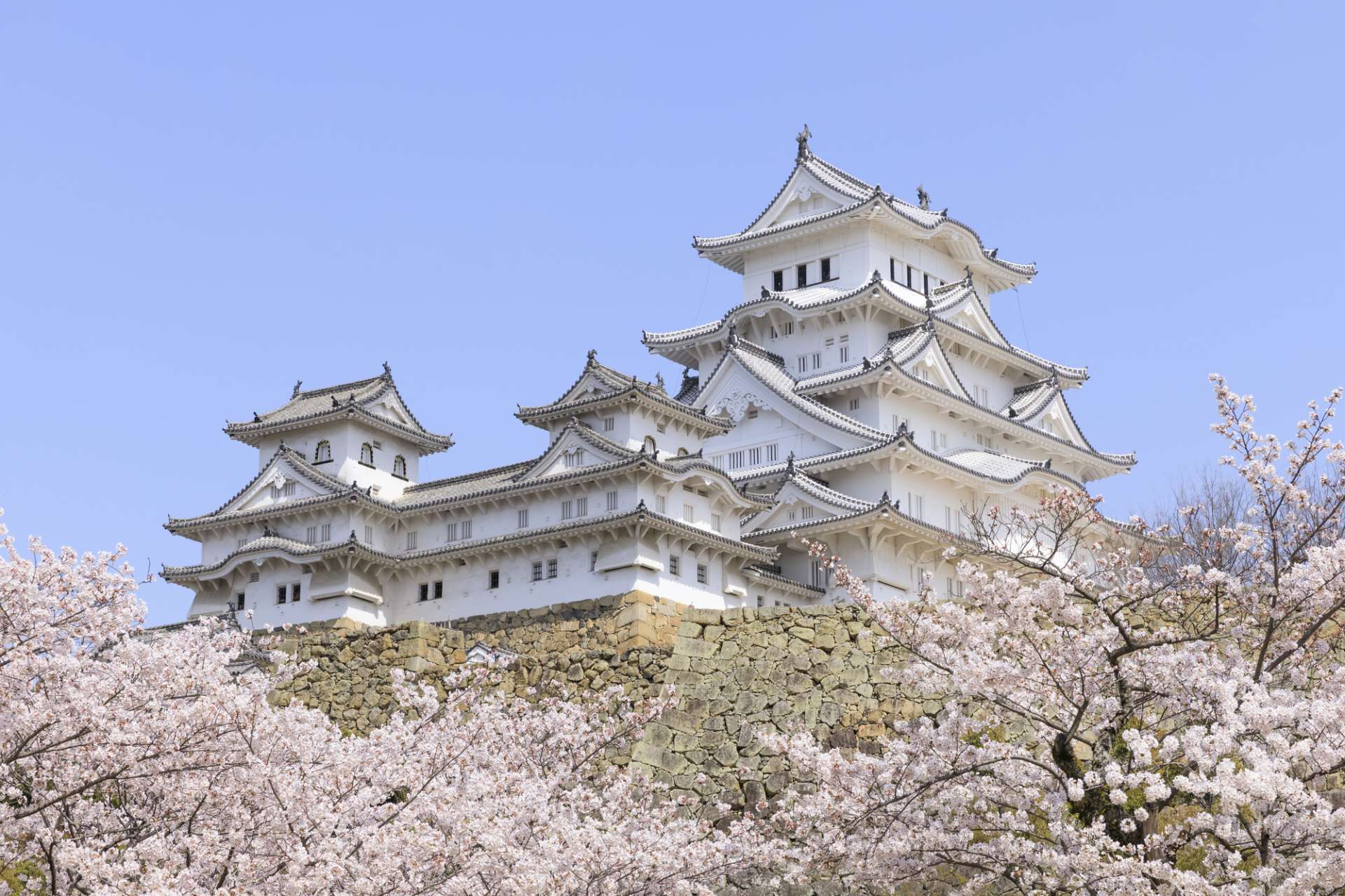
The Harima region, spanning a vast area in the southwestern part of Hyogo Prefecture, has thrived as a land of abundance since ancient times, with the fertile Harima Plain and Harima Nada, one of Japan's prime fishing grounds.
As recorded in the "Harima Fudoki" compiled during the Nara period, this pocket of earth has thrived as a bountiful country since the early days.
The rich nature, climate, history, and technology have been passed down through the ages, continuing to produce many specialty products today.
Sake is one generational heritage to explore. Harima is the birthplace of Yamada Nishiki, known as the king of sake rice, and has a rich supply of naturally nurtured famous water.
In Harima, sake brewing has been actively carried out with the high technical skills of Banshu Toji, said to be the oldest group of Toji in the Kinki region.
The "Harima Fudoki" also contains what is considered the oldest description of sake brewing using koji in Japan.
Harima is sometimes nicknamed the hometown of Japanese sake, boasting some 22 different sake breweries across the area today.
One of them is Nadagiku Sake Brewery, located in the heart of Harima, Himeji City, the closest brewery to Himeji Castle.
Founded in the 43rd year of Meiji (1910), this site has operated for over 110 years alongside the tride and true traditional brewing methods that preserve the sake brewing culture of Harima.
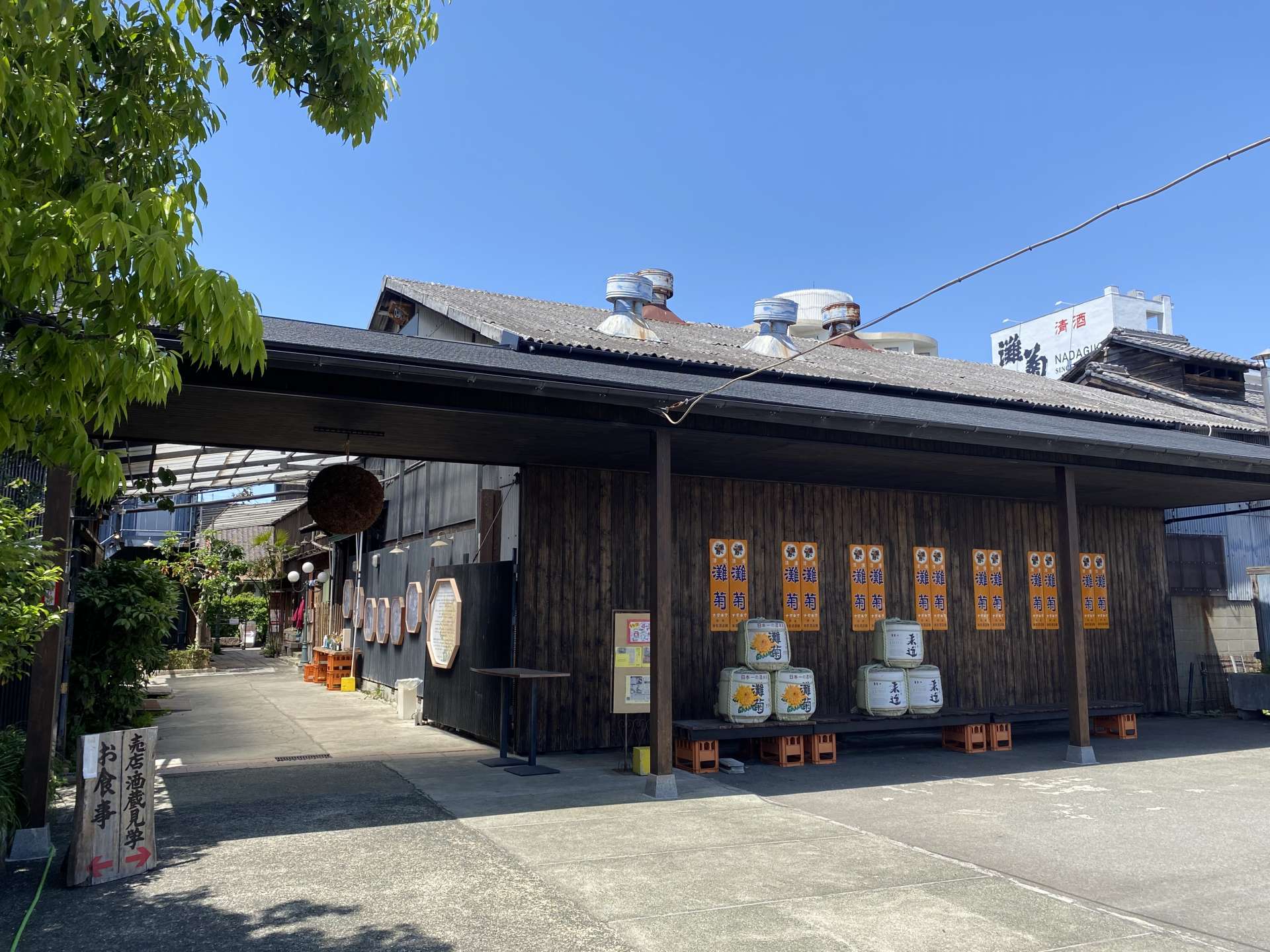
Over 110 years of history in Himeji's cityscape, once the castle town of Himeji Castle.
The brewery is led by Misa Kawaishi, the representative and Toji.
Kawaishi is the first female Toji in Hyogo Prefecture, the first in Western Japan as a Nambu Toji, and the third female Toji nationwide.
"Enjoying sake brewing with all five senses" is her motto, and she manages the historic brewery while caring for the health and safety of her brewery team.
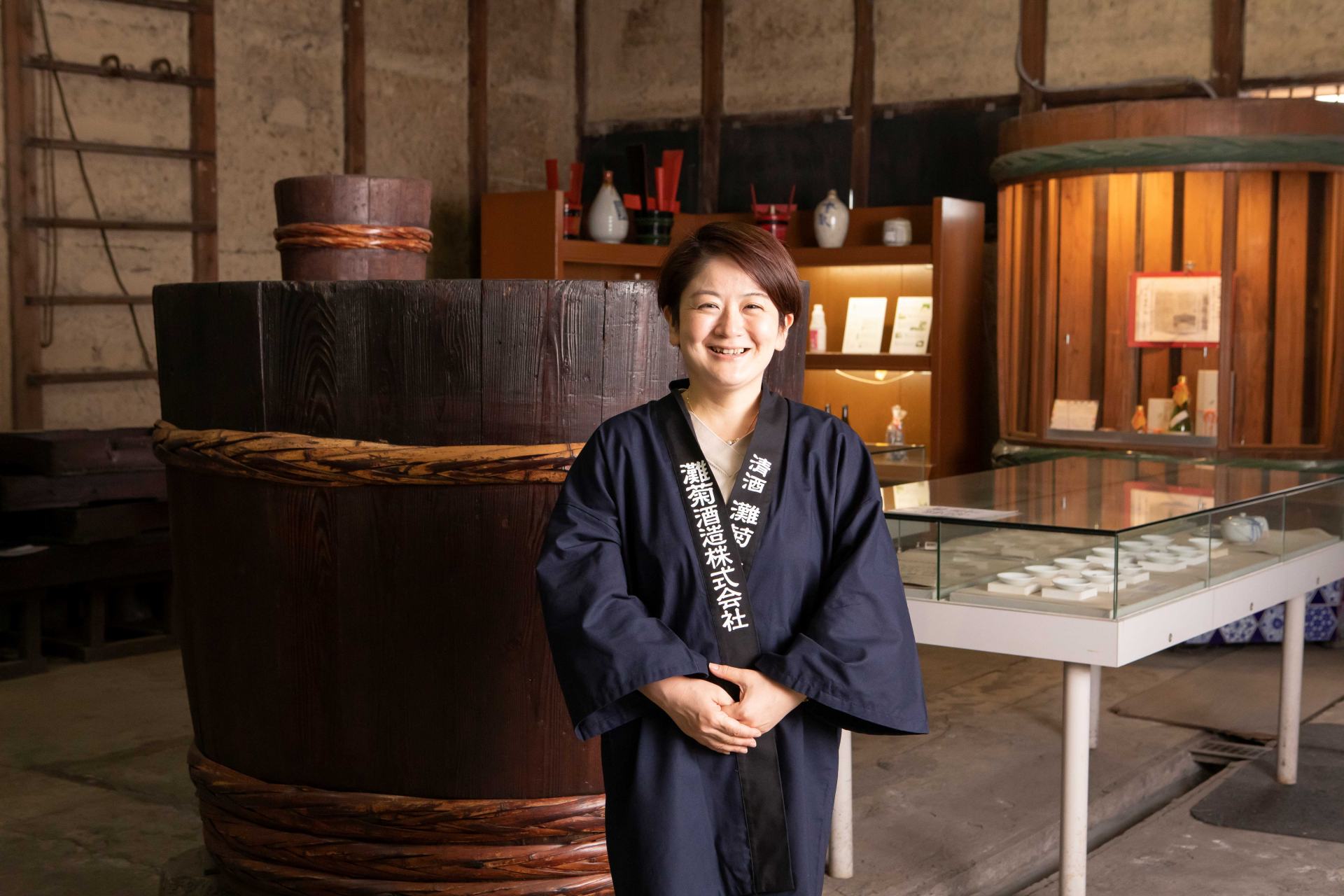
Misa Kawaishi, the rare female Toji and the fourth-generation brewery owner.
A distinctive feature of their sake brewing is the small batch size of 500kg. Although the annual production is not large, at 200 goku (enough for 20,000 bottles of 1.8 liters each), all processes are meticulously carried out by hand. Especially, the final "pressing" stage uses an old-fashioned press, taking three days for a process that normally takes half a day with a modern press.
Although this results in about 10% less sake, it yields a purer, more transparent sake.
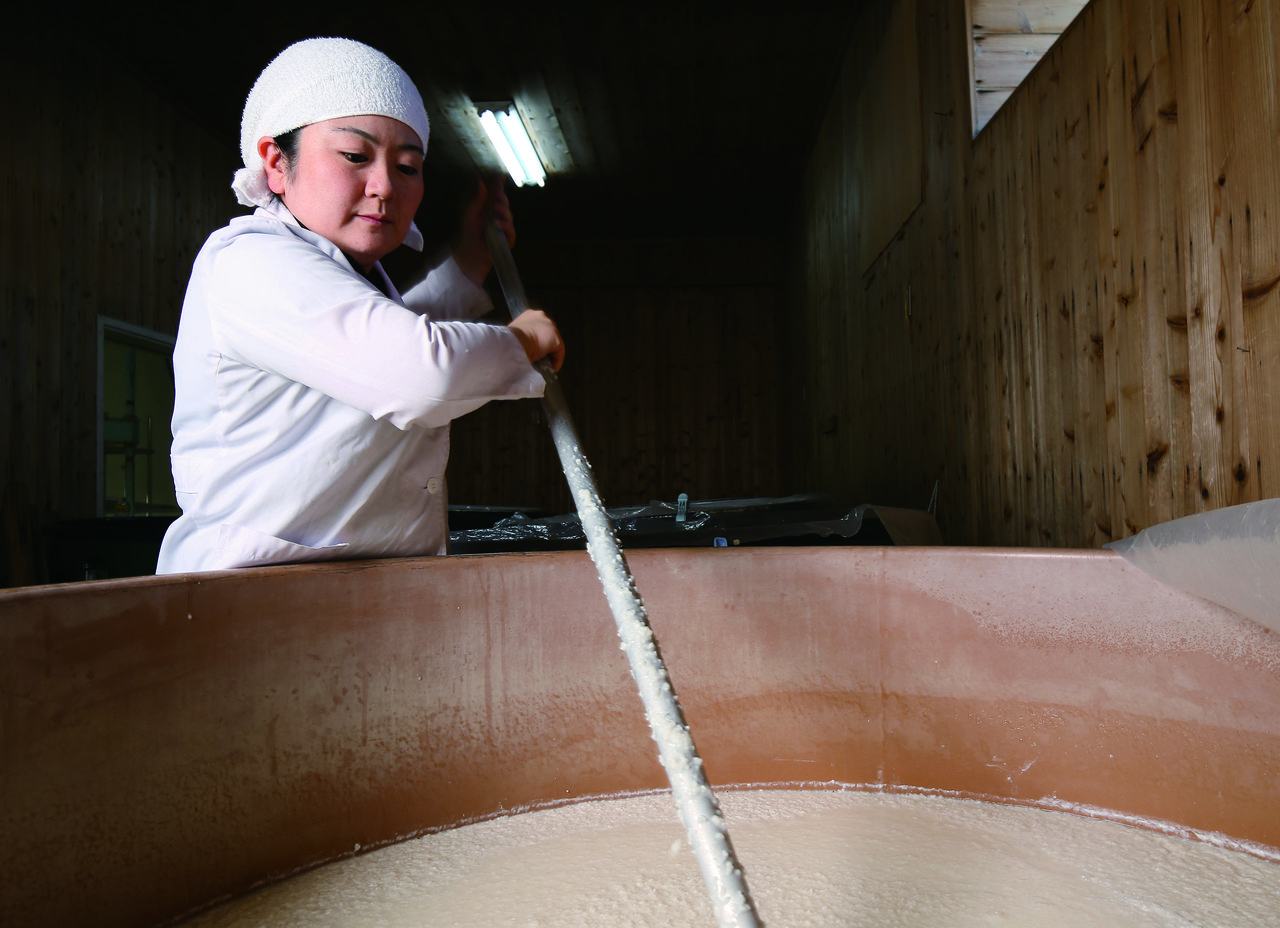
Adhering to traditional sake brewing by hand, sparing no effort or time.
Moreover, within the 2,700 square meters across the sprawling property, seven wooden sake brewing buildings from the founding days still exist.
The wooden sake brewery halls are open to the public as a tour course, allowing free visitation.
There's also a direct sales store where freshly brewed sake can be tasted and a dining facility to taste the local gourmet as a pairing, offering a full sensory experience of the brewery and Japanese sake.
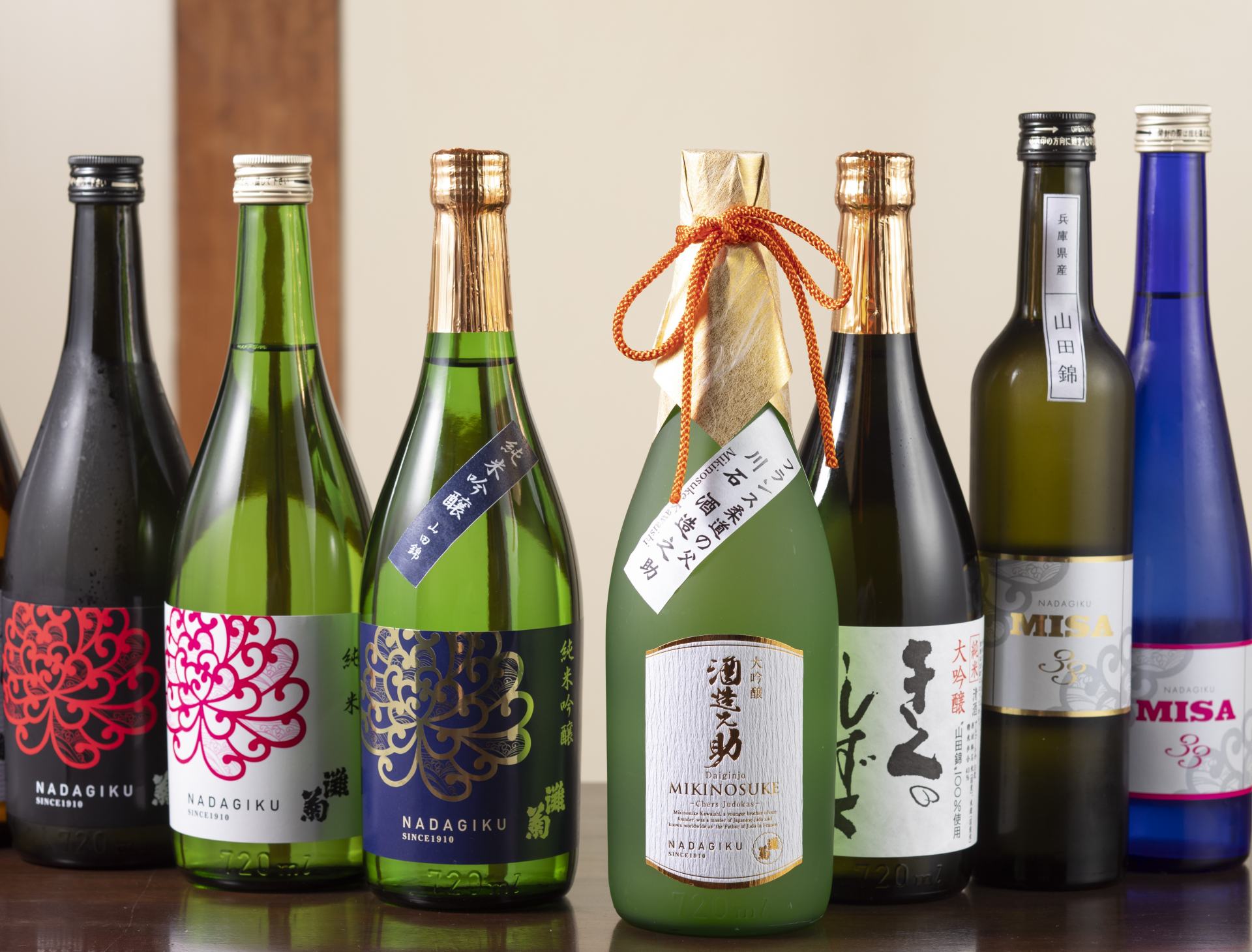
Your new favorite awaits at the other end of a wide-range tasting inside the direct sales shop.
Details
- Name in Japanese
-
灘菊酒造株式会社
Nadagiku Sake Brewery Co., Ltd. - Postal Code
- 670-0972
- Address
- 1-121 Tegara, Himeji City, Hyogo
- Telephone
- 079-285-3111
- Business Hours
- 10:00am - 5:00pm (Last entry for the tour course is at 4:00pm)
- Closed
- Open daily
- Access
- About a 5-minute walk from Tegara station on the Sanyo Electric Railway Main Line
[Tottori Prefecture] At the foot of the sacred Mt. Daisen, Otani Sake Brewery engages in rice cultivation for sake and brews the dry signature sake "Takaisami”.
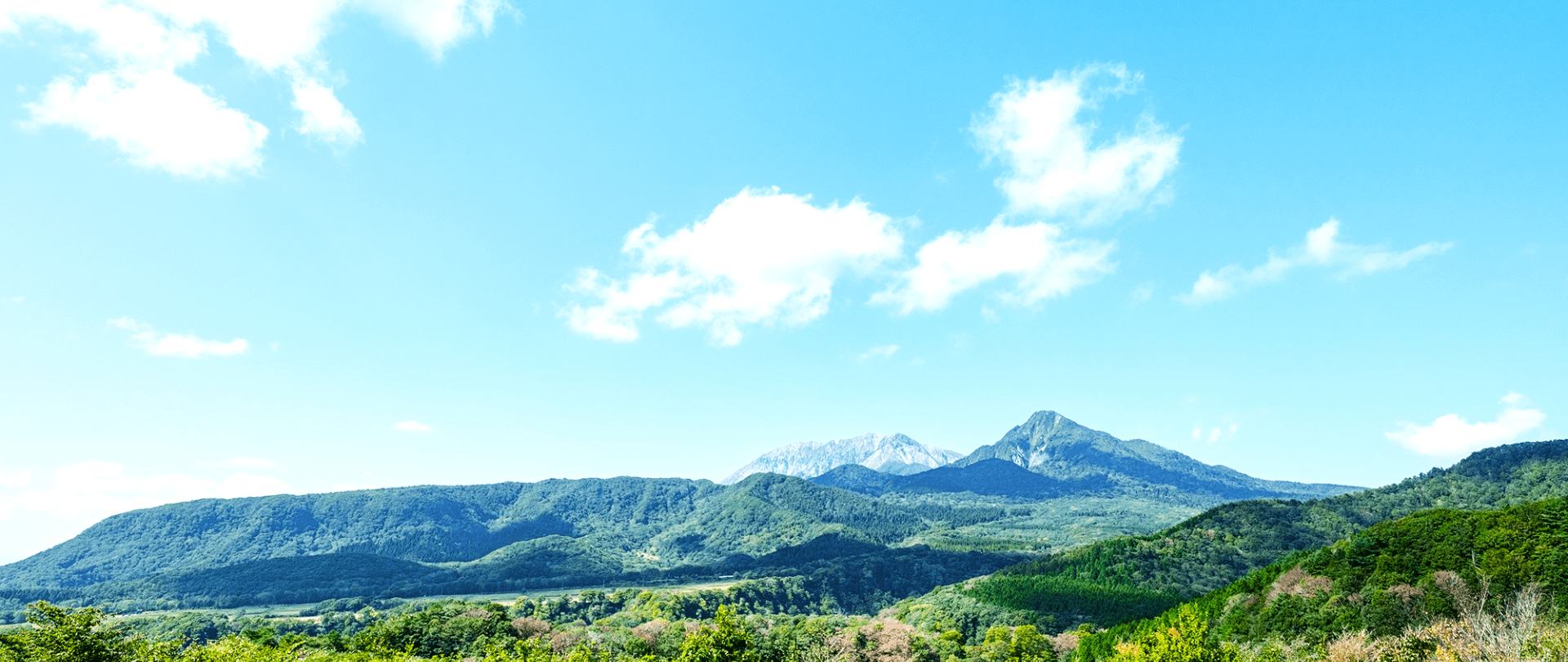
Kotoura Town, located in the central part of Tottori Prefecture, lies between the Sea of Japan to the north and the towering Mt. Daisen to the south.
The town's name is said to originate from a coast called Koto no Ura during the Heian period, where the sound of the waves coming and going resembled the strumming of a koto.
The town is home to many historic sites and places of interest, such as the largest national historic site in the prefecture from the Hakuho period, "Saino Temple Ruins”, "Senjosan" known from the epic tales of the Taiheiki, and the "Great Camphor Tree of Hoki," a designated natural monument of Japan.
Moreover, blessed with the bounty of the mountains and the sea, it is a treasure trove of ingredients symbolizing Tottori, a food paradise.
Otani Sake Brewery is set here in this same backdrop with a history of over 150 years since its establishment in 1872.
The flagship brand is "Takaisami”, named after a hawk admired by the first brewery owner for its brave flight in the sky.
Since then, the refreshing dry taste characteristic has been passed down by the Toji and brewery team.
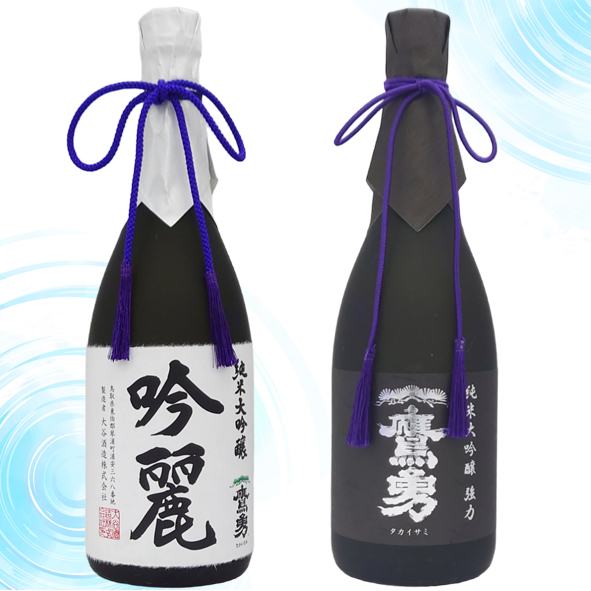
The flagship brand Takaisami, passed down since the founding generation.
At Otani Sake Brewery, the brewery workers are involved in everything from rice cultivation to brewing.
This involvement allows them to check the quality of the rice themselves, utilizing it in processes such as in-house rice milling and water absorption adjustments.
The sake rice used is almost exclusively from Tottori Prefecture, including local brands like Yamada Nishiki, Tamazakae, and the local Gouriki.
The brewing water comes from the underground streams of Mt. Daisen, embodying the motto of "sake brewed with heart, leaving an impression," rooted in the terroir of rice and water.
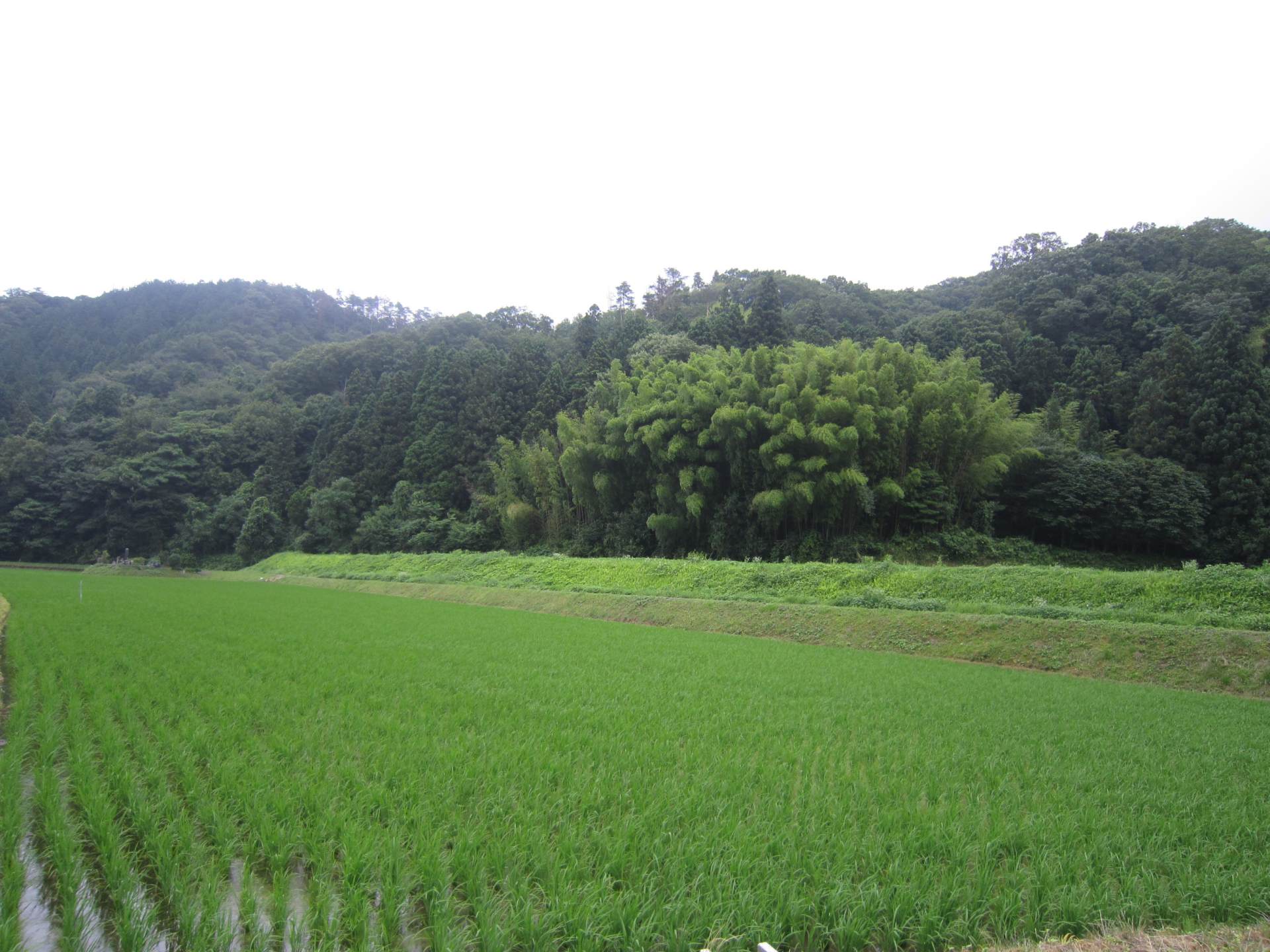
Brewery workers themselves engage in rice cultivation, in the paddy fields at the foot of Mt. Daisen.
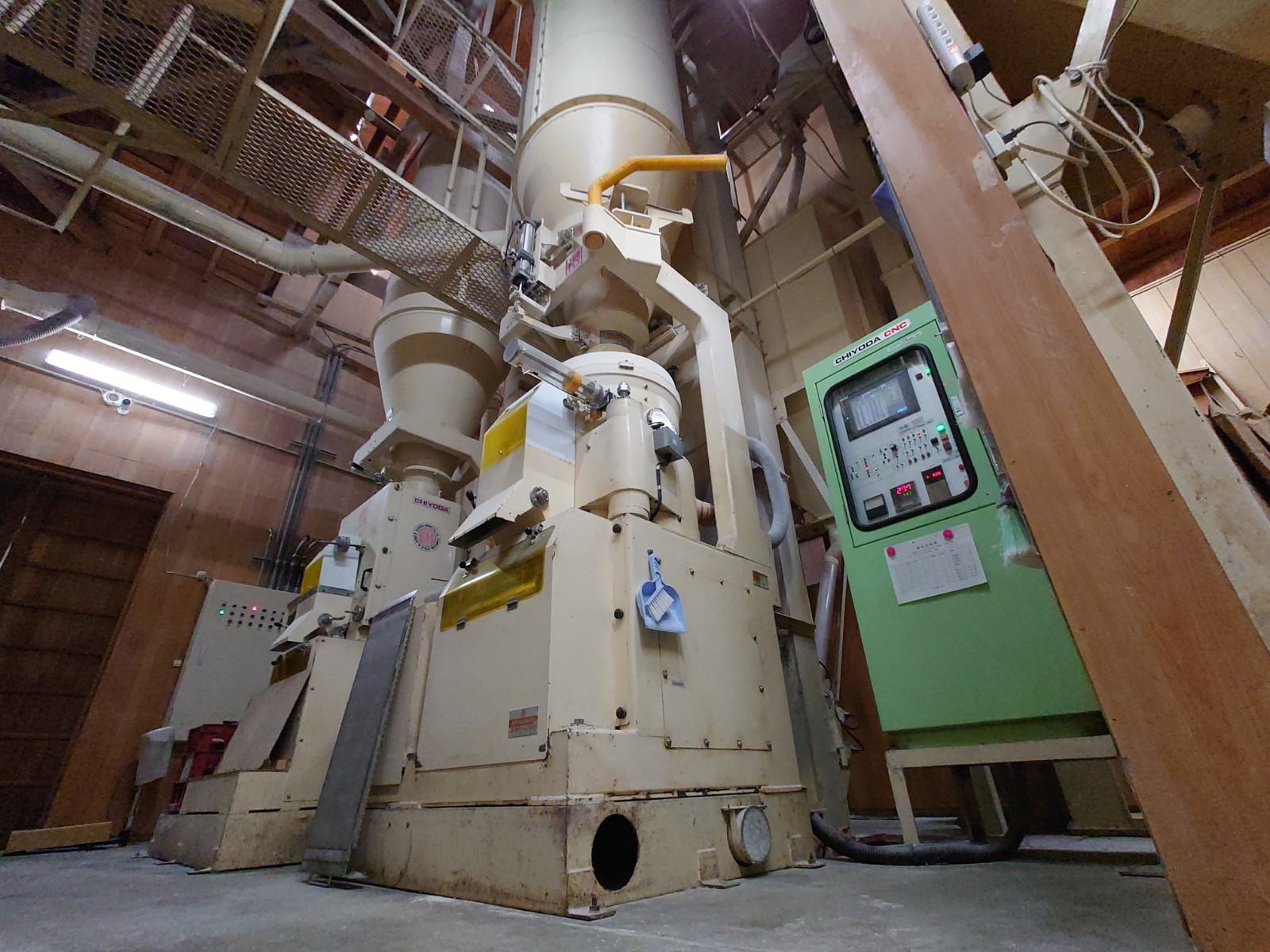
Rice for sake is milled in-house for each variety, taking time to carefully polish the rice.
See the pure love of sake brewing come alive in an exclusive brewery tour.
After watching a video and receiving an explanation, visitors are guided through the brewery, following the brewing process.
Advance reservations are required, so check the business day calendar on their website before planning to stop by.
Especially during the brewing season from November to April, it's a rare opportunity to see the brewery workers in action.
Of course, visitors can also purchase sake directly from the brewery after the tour.
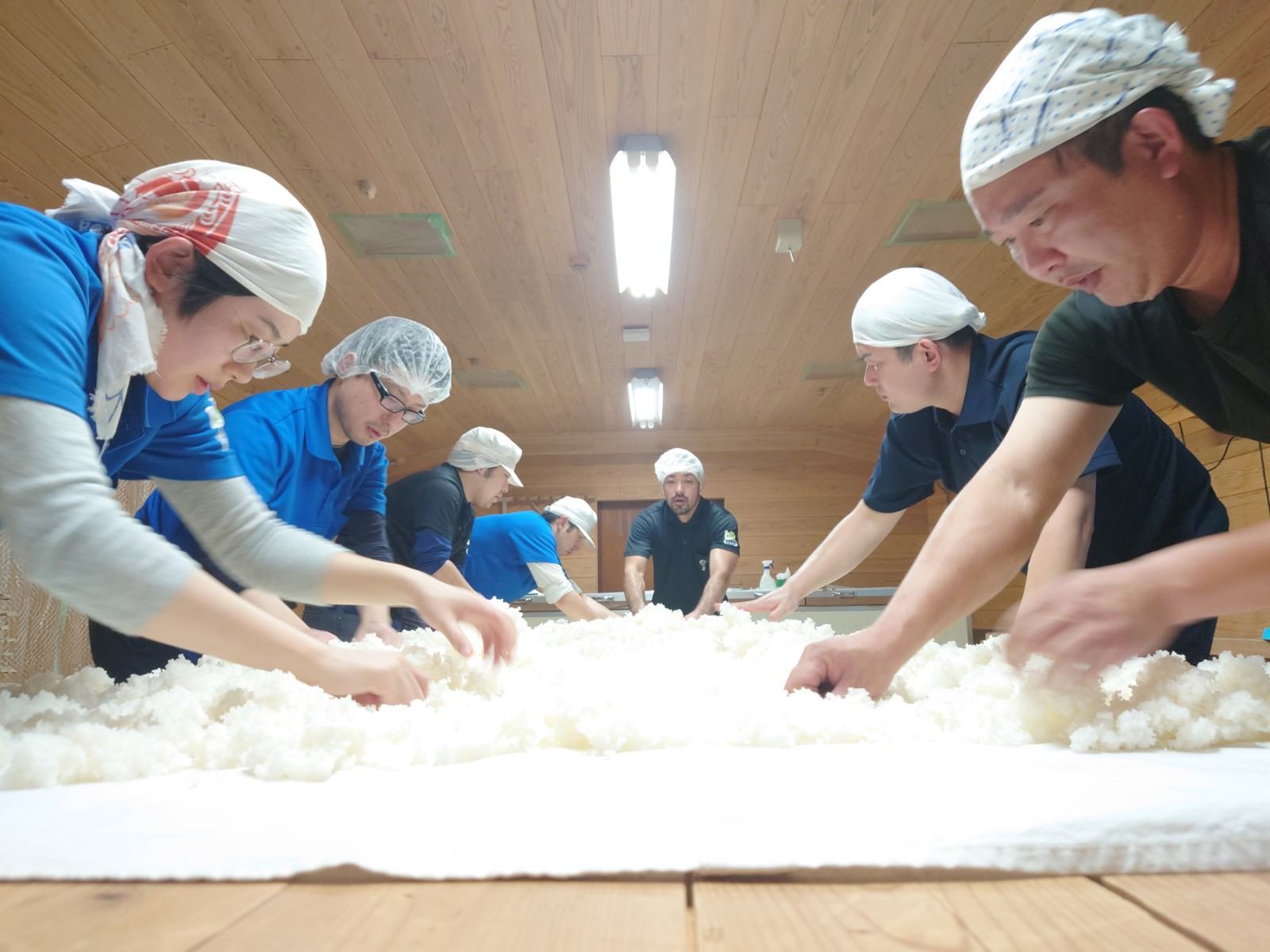
Brewery tours offer a unique experience to see the skill of the brewery workers up close.
Details
- Name in Japanese
-
大谷酒造株式会社
Otani Sake Brewery Co., Ltd. - Postal Code
- 689-2352
- Address
- 368 Urayasu, Kotoura-cho, Tohaku-gun, Tottori Prefecture,
- Telephone
- 0858-53-0111
- Business Hours
- 8:00am - 5:00pm
- Closed
- Sunday, Saturdays are irregularly closed
- Foreign Language Website
- Official Website
- Access
- About a 15-minute walk from Urayasu station on the JR San'in Main Line
[Tokushima Prefecture] Brewed with the underground water of the Yoshino River, a sake that brings out the flavor of rice, "Hosui Sake Brewery”.
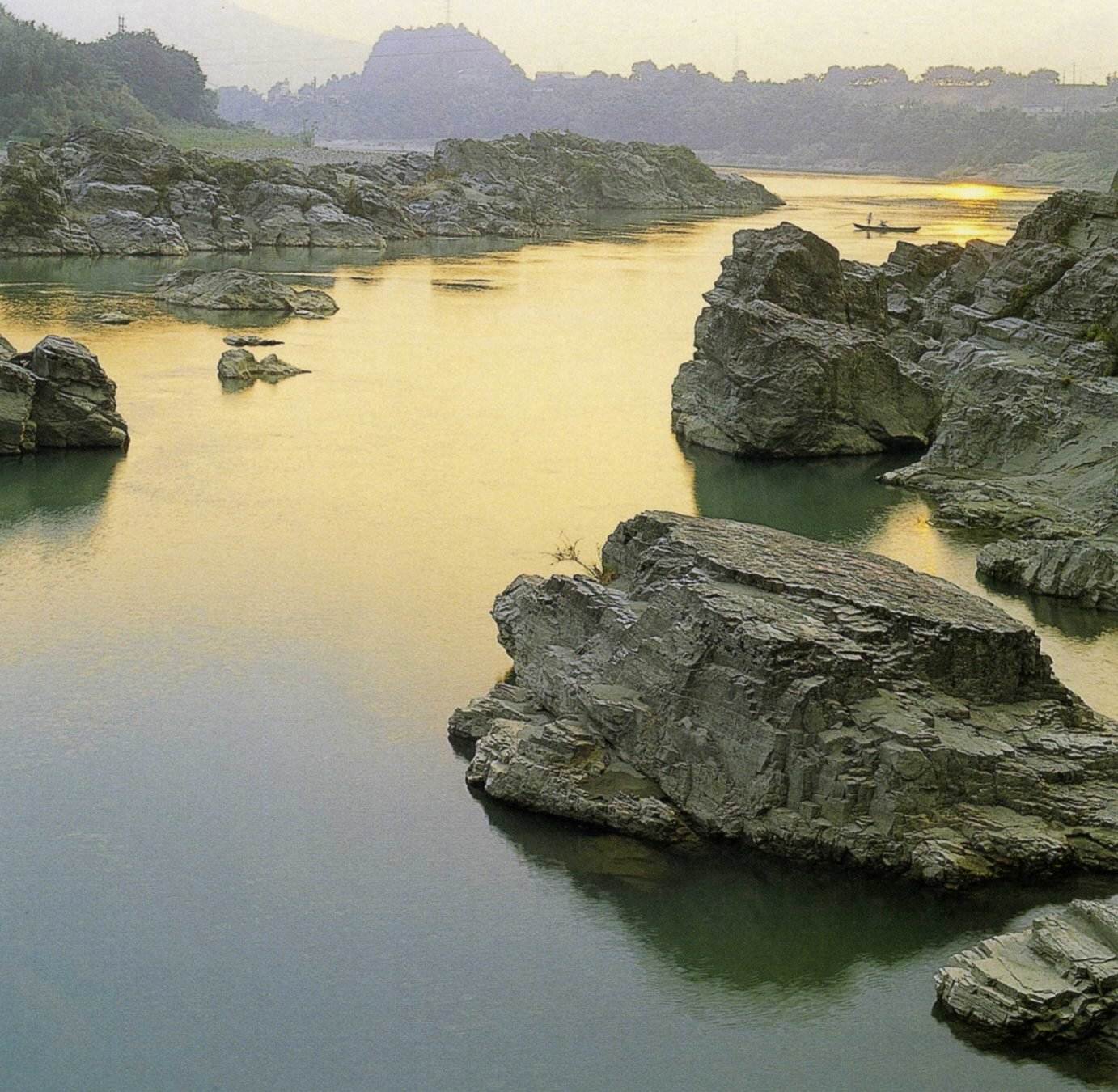
Miyoshi City in Tokushima Prefecture, located almost at the heart of Shikoku, has developed as a vital transportation hub from ancient times.
Over 200 million years, the breathtaking valley beauty of Oboke and Koboke was formed, along with Mt. Tsurugi, which boasts the second-highest elevation in Shikoku, the Iya Valley, one of Japan's three major unexplored regions with legends of the Heike clan's exiles, and the Ochiai Village, designated as a national important traditional buildings preservation district.
It's a region brimming in resplendent nature, history, and culture.
In its northern part, on the south bank of the Yoshino River, known as one of Japan's clearest streams, lies the small town of Ikawa.
The climate here is unusual for Shikoku, with short daylight hours and severe winter colds, making it suitable for sake brewing and storage.
Focusing on this environment, the underground water of the Yoshino River, and excellent local sake rice, Hosui Sake Brewery began brewing sake in 1913.
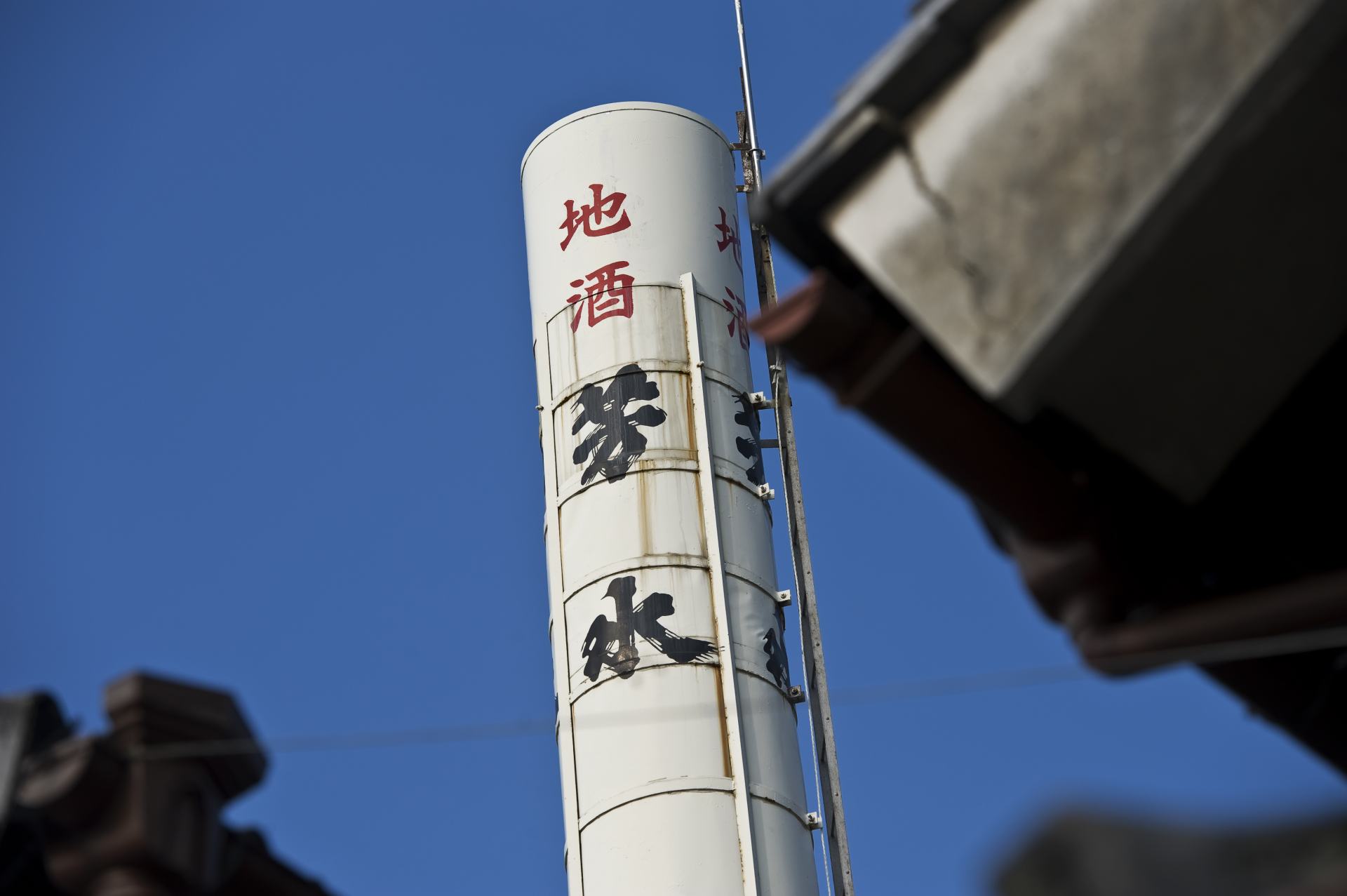
A traditional brewery with a history of over 110 years.
The flagship brand is "Hosui." It discerns the characteristics of sake rice for polishing and pursues a natural taste that brings out the umami of rice, using clear air and crisp brewing water.
It is characterized by a clean taste, glossy and full-bodied umami, and an elegant aroma.
Interestingly, the name "Hosui" originates from a Chinese poem recited by patriots during boat rides in the late Edo period.
This area prospered as a production site for Awa Kizami tobacco from the end of the Edo to the Meiji period.
At that time, patriots enjoyed the refined pastime of exchanging sake and reciting Chinese poems on boats floating on the Yoshino River.
In 1916, the first brewery owner brewed a sake with a wonderful aroma that gained significant popularity.
Hoping to preserve its fragrance forever, the sake was named "Hosui," inspired by Chinese poems that referred to the Yoshino River as "Yoshino River" or "Yoshinomizu."
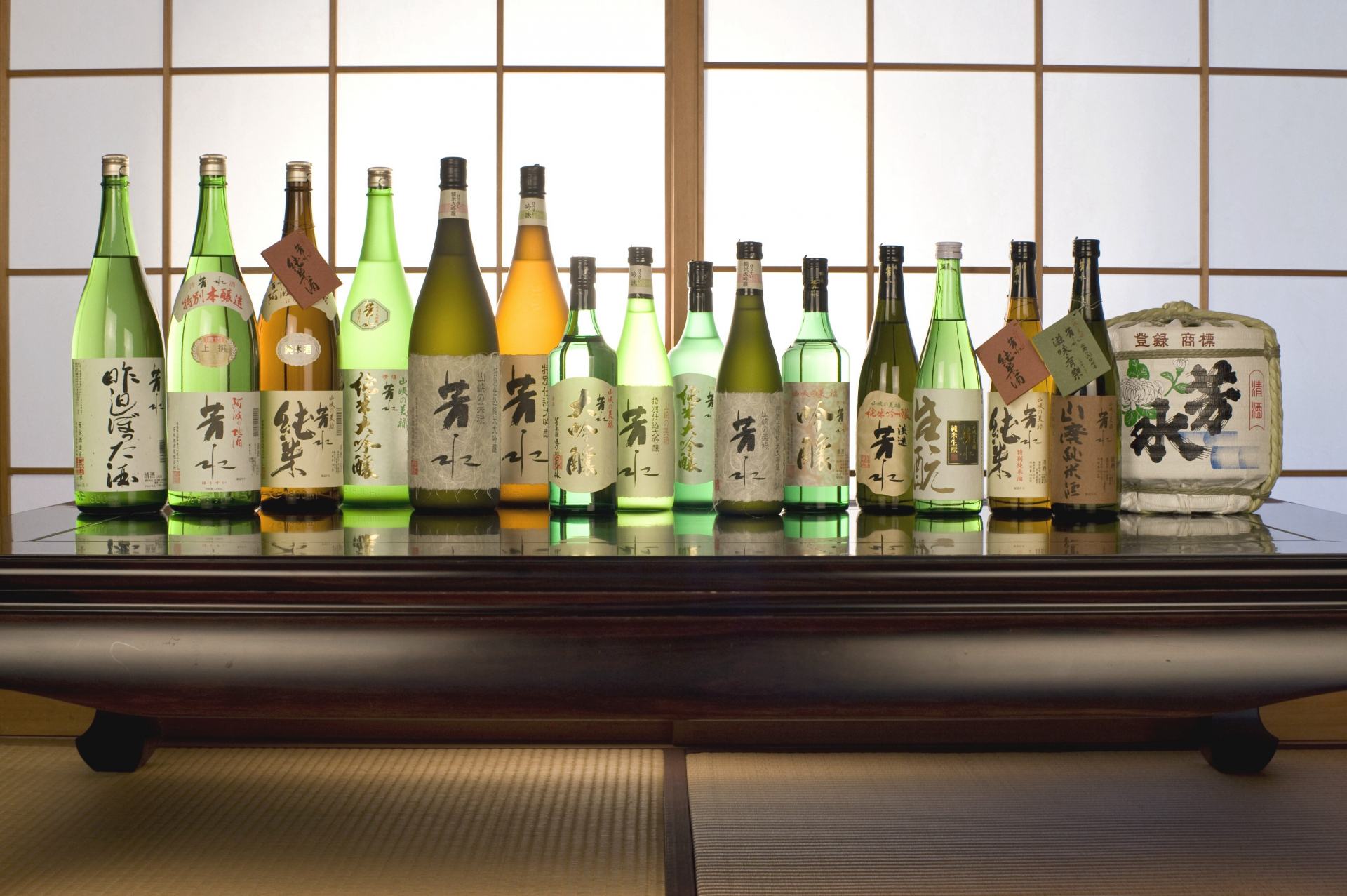
The local sake of Miyoshi, "Hosui," passed down from the first generation.
Even after the abolition of the sake grade classification system in 1992 and the transition to specific name classifications such as "Junmai Sake" and "Junmai Ginjo Sake”, the brewery has focused on improving the quality of regular sake, which underpins these classifications. Its several awards at the National New Sake Appraisal serve as evidence of this commitment. In 2003, it also achieved the distinguished honor of presenting "Sunkyo no Biroku Hosui Junmai Daiginjo" to the then Crown Prince, now Emperor.
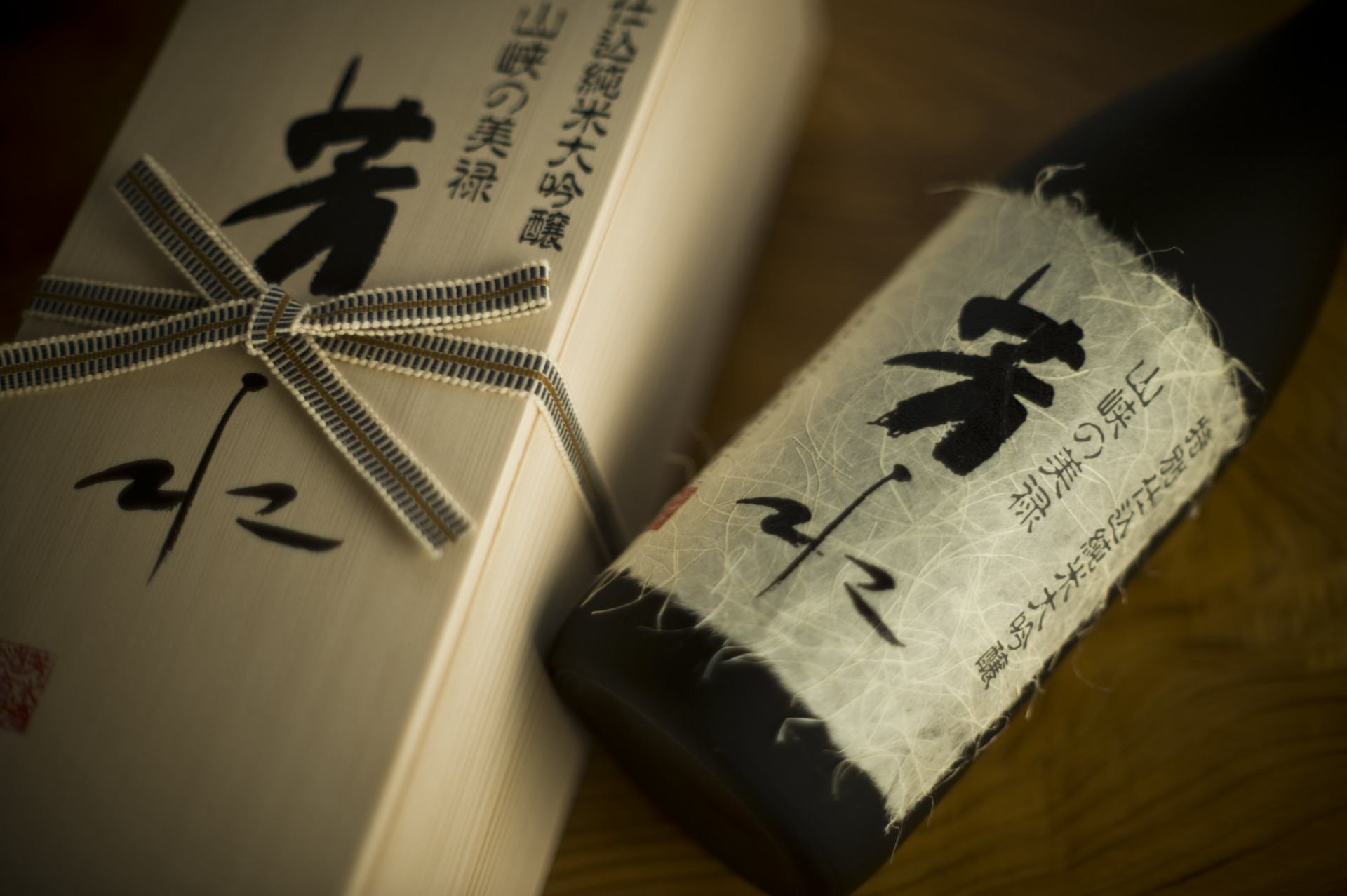
A bottle of Sunkyo no Biroku Hosui Junmai Daiginjo, presented to the Imperial Family.
Yasuji Baba is the 5th generation brewery owner, bent on the painstaking care of the sake rice, a paramount ingredient in sake brewing made possible by the abundant underground waters flowing from the Yoshino River. He works in close, constant communication with the brewery team and values harmony among the entire group as they collectively watch and nurture the sake rice with precision.
This meticulous approach is how Baba preserves the Hosui brand, named to mean “fragrant waters” by the first generation owner who hoped its sumptuous perfume would last an eternity.
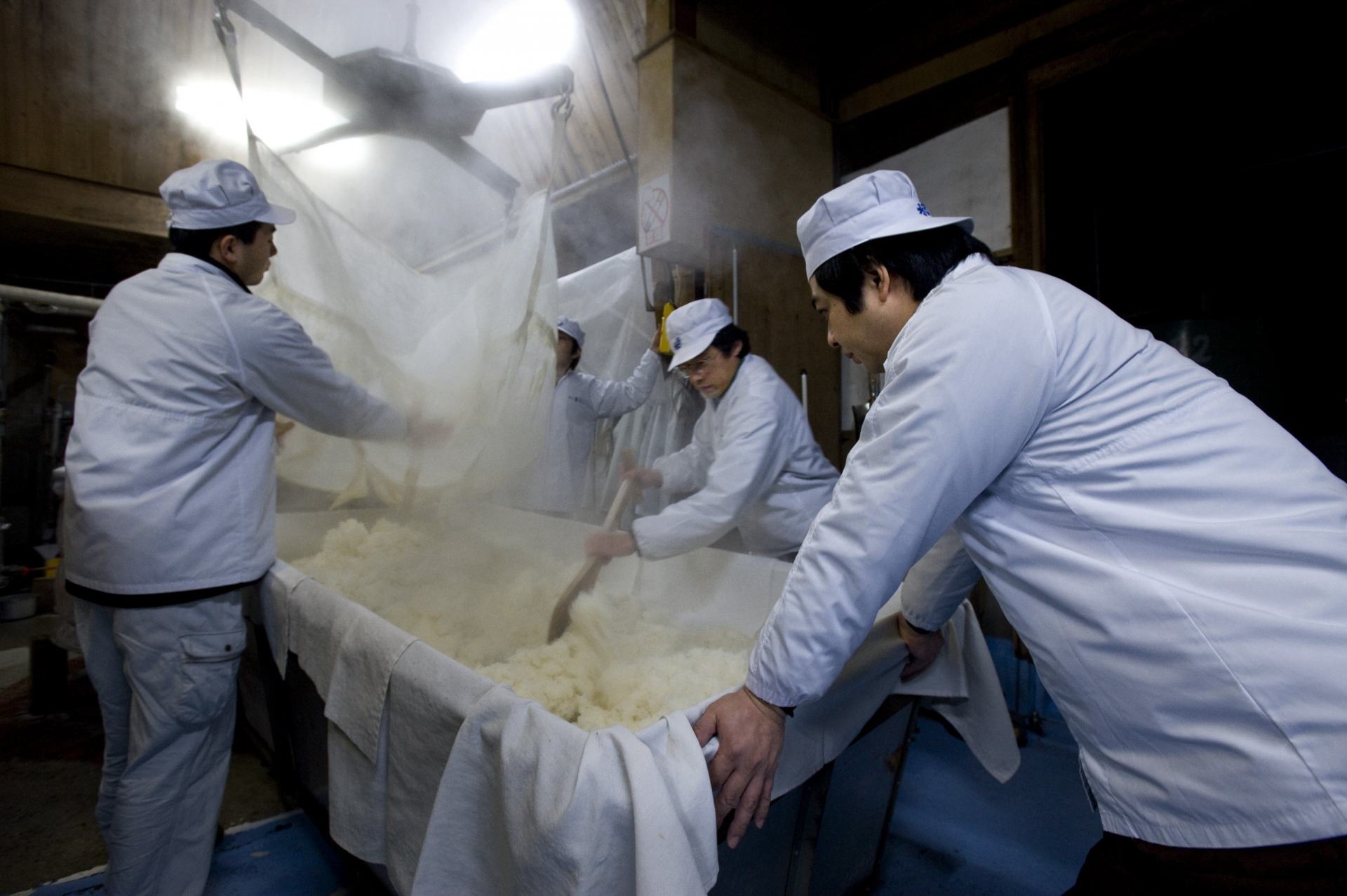
Rinsing away the rice brans to allow for more water absorption before steaming.
Details
- Name in Japanese
-
芳水酒造有限会社
Yoshimizu Sake Brewery Co., Ltd. - Postal Code
- 779-4801
- Address
- 231-2 Tsuji, Ikawa-cho, Miyoshi City, Tokushima
- Telephone
- 0883-78-2014
- Business Hours
- 8:00am - 5:00pm
- Closed
- Sunday, public holidays
- Access
- About a 10-minute walk from Tsuji station on the JR Tokushima Line (Yoshino River Blue Line)
Wrap-up
Each of the ten prefectures in the sake-steeped region of Kansai is home to a brewery, celebrated for its unshakable ties to the climate and region.
All ten in this curated cohort are known for preserving their age-old heritage while serving up new innovations to pass Japanese sake culture into the next generation.
No matter which you visit, you’re in for a remarkable glimpse into artisan sake makers and how the love of their craft is an expression of the land itself.
